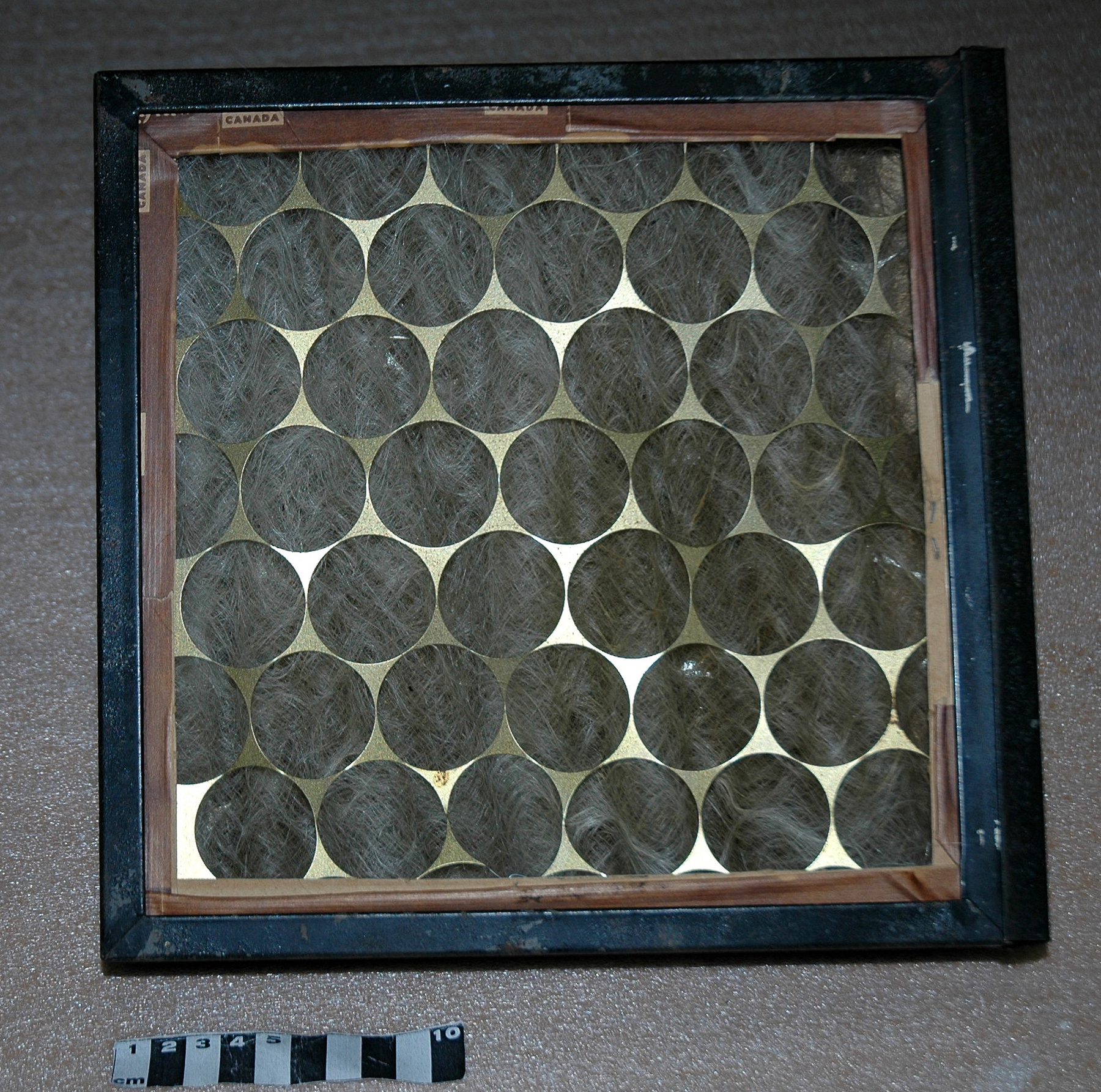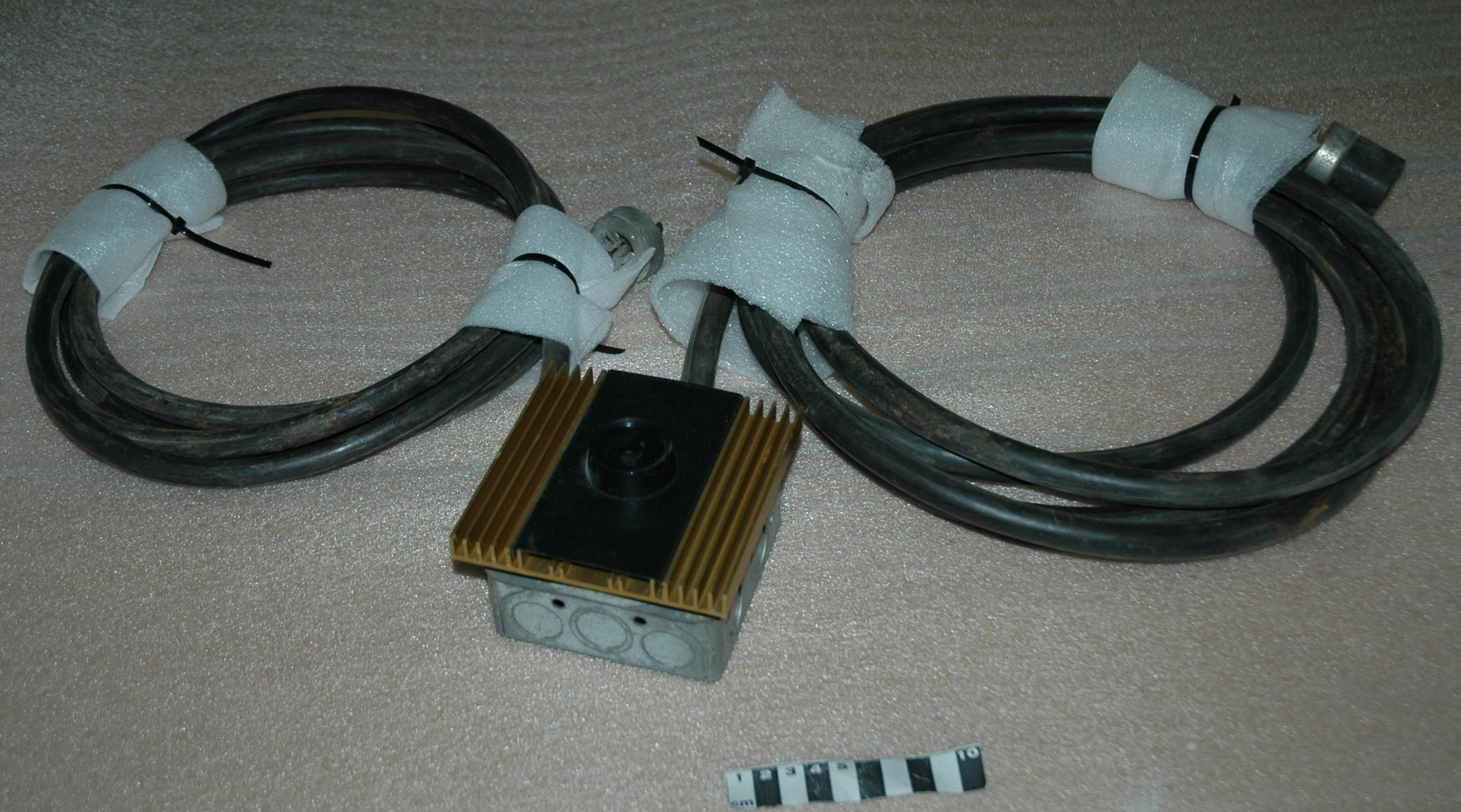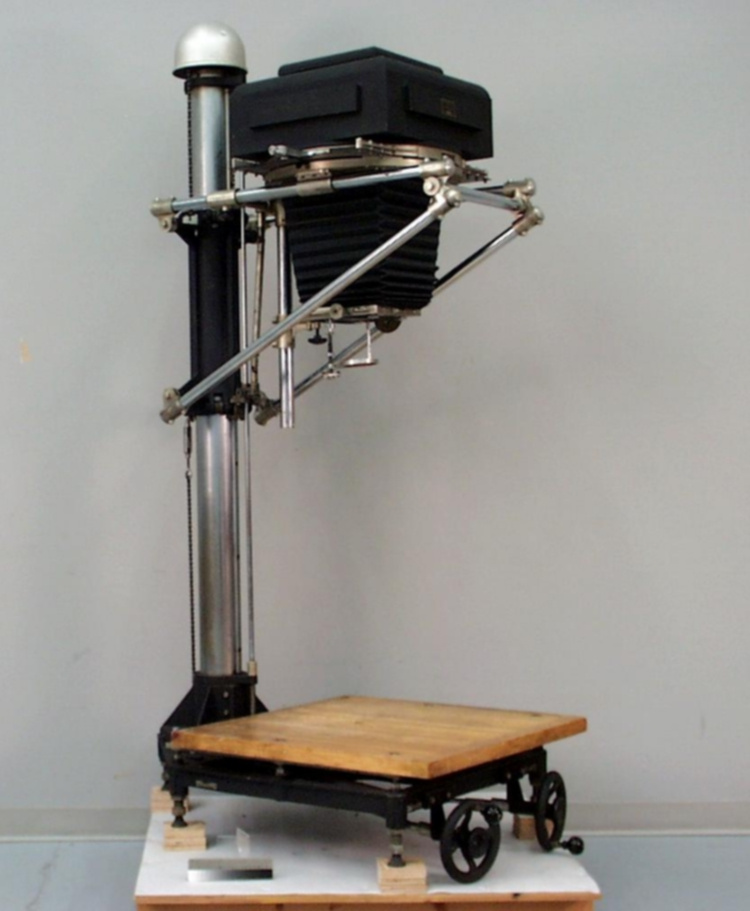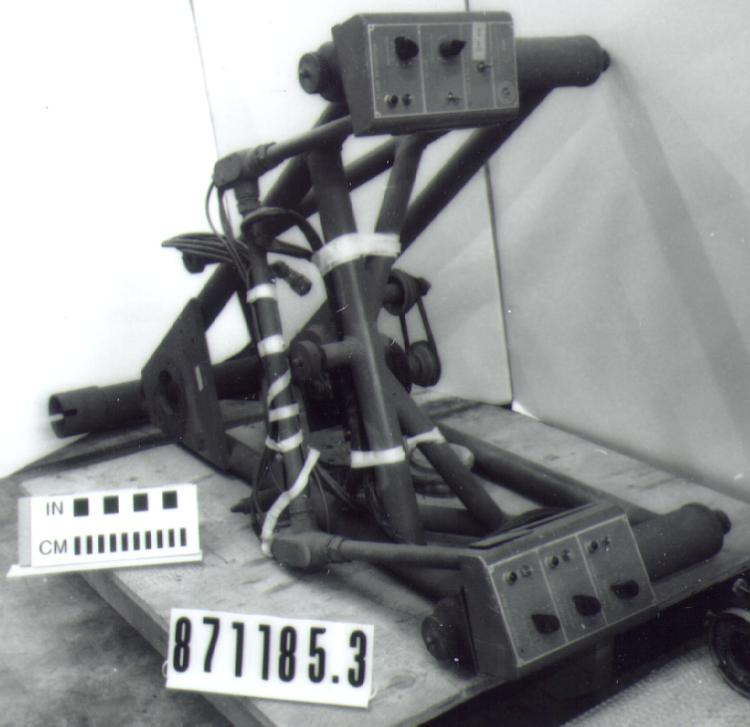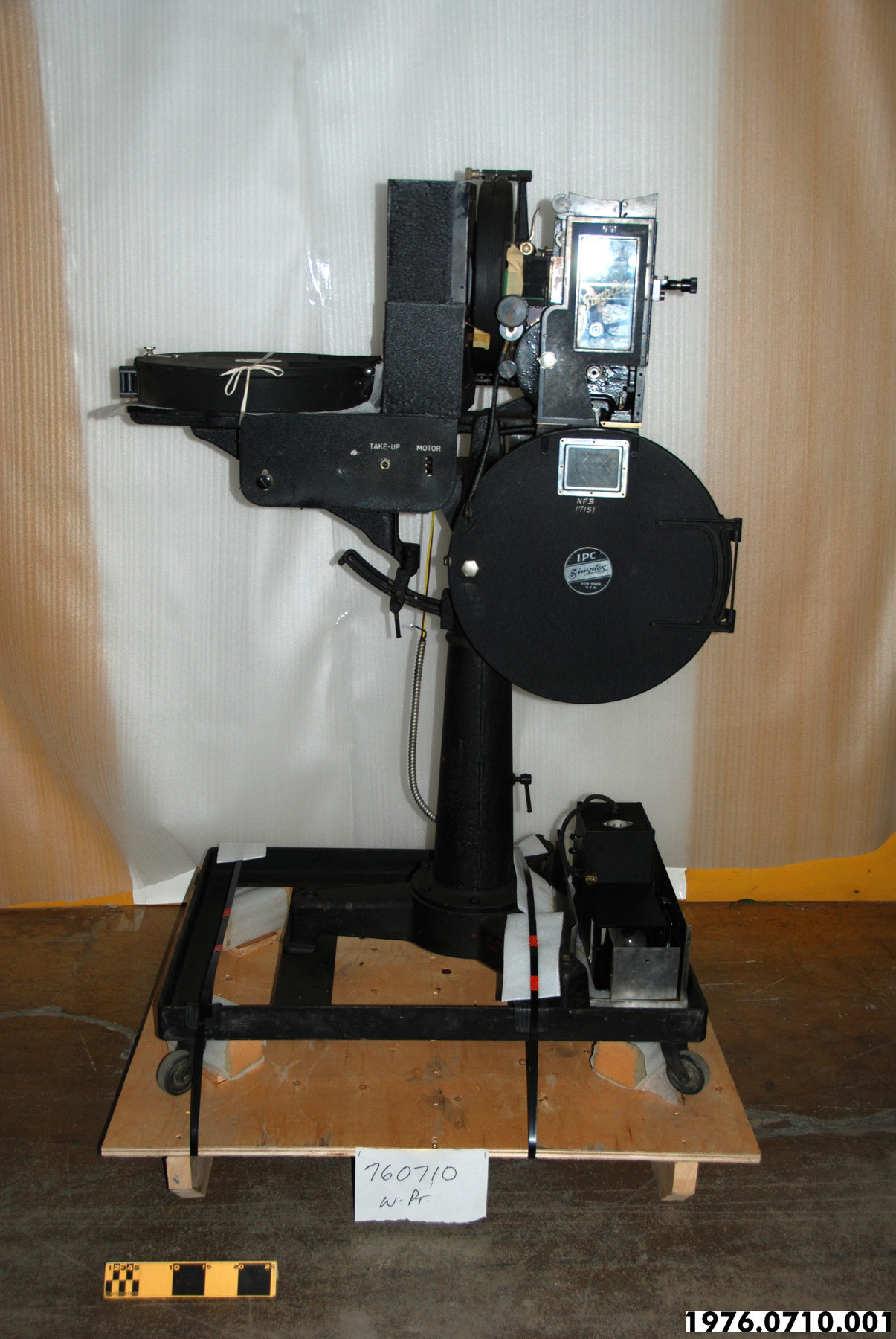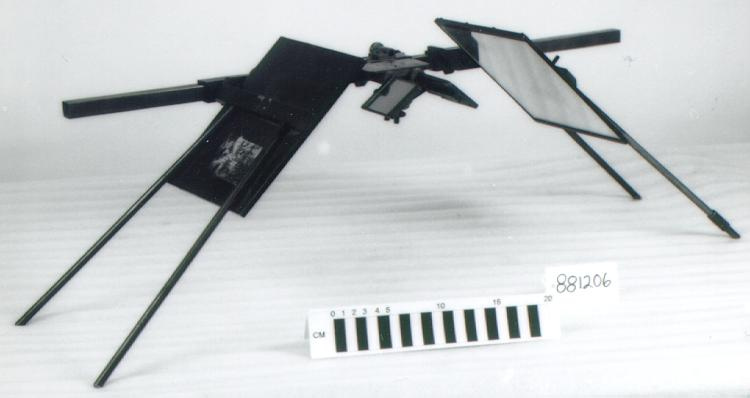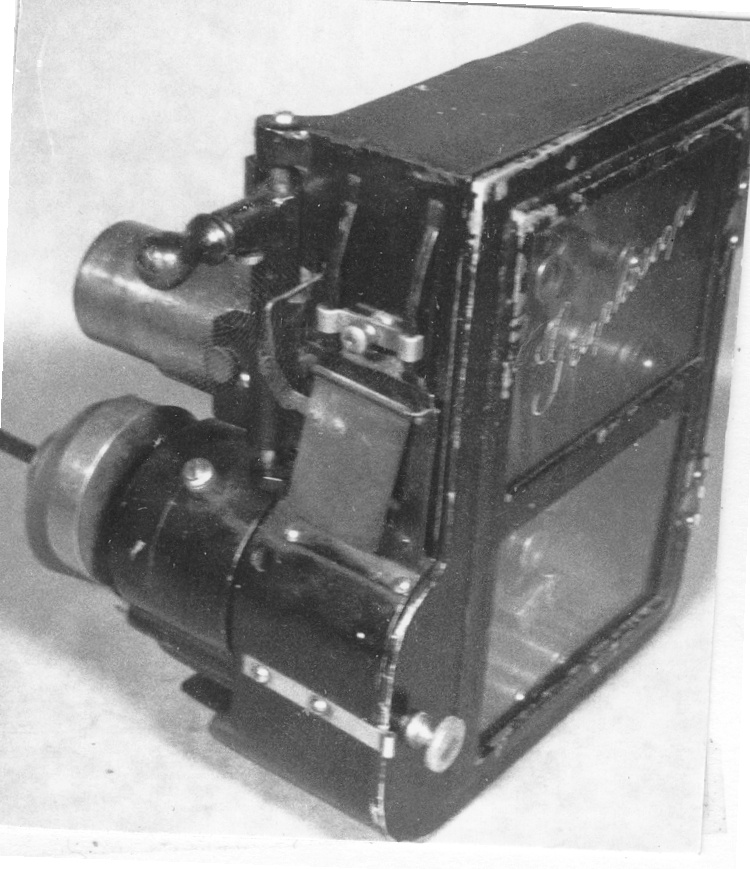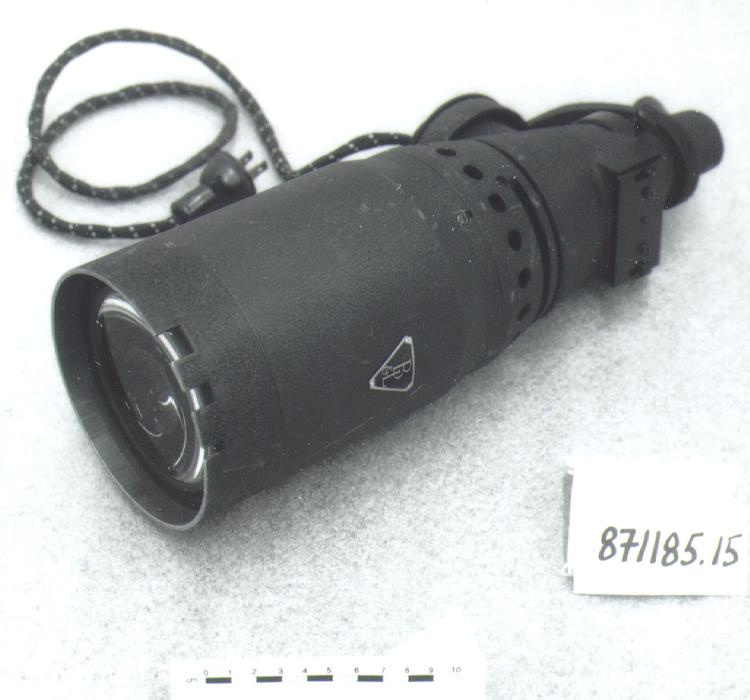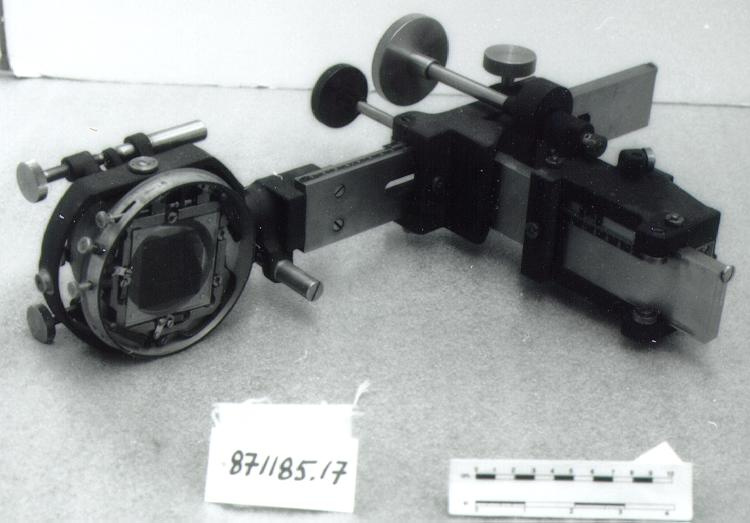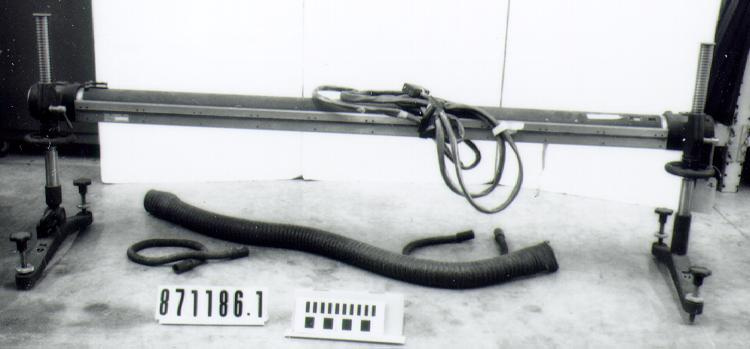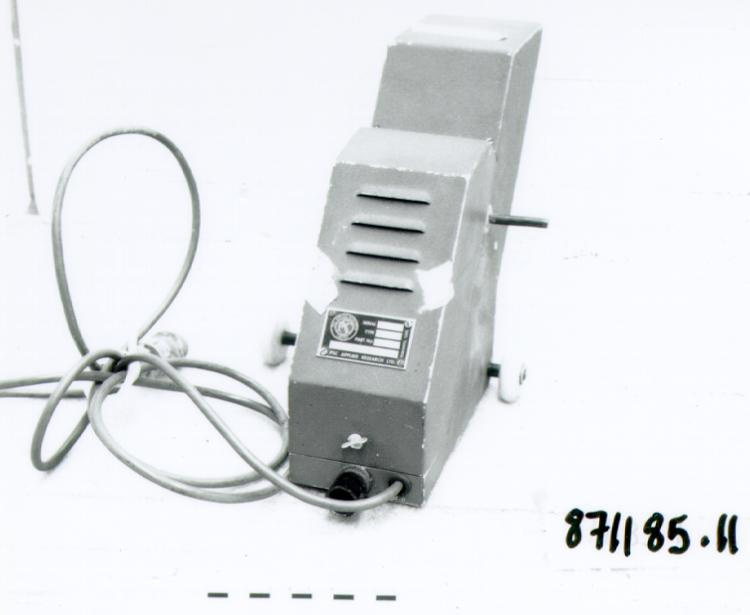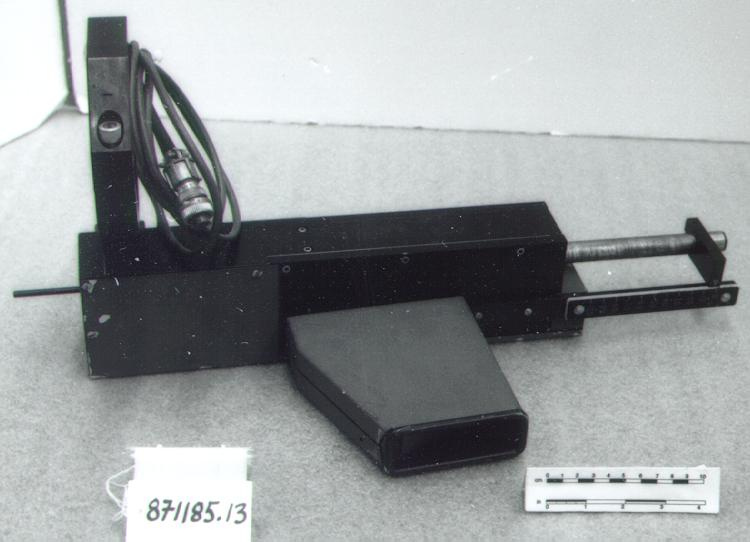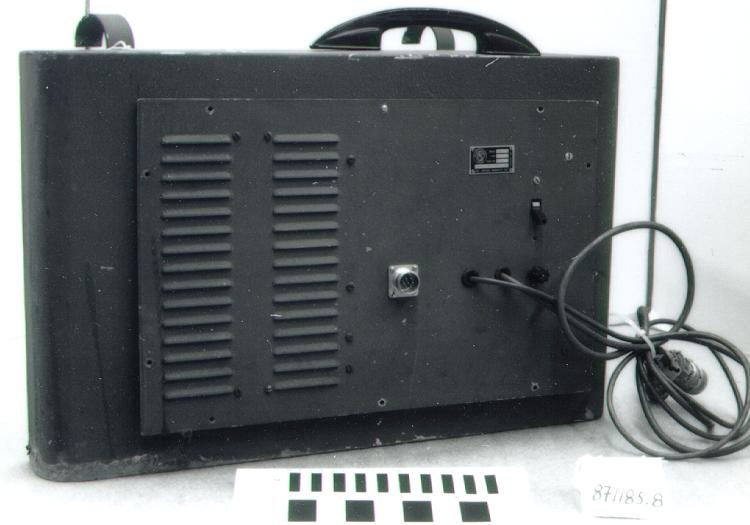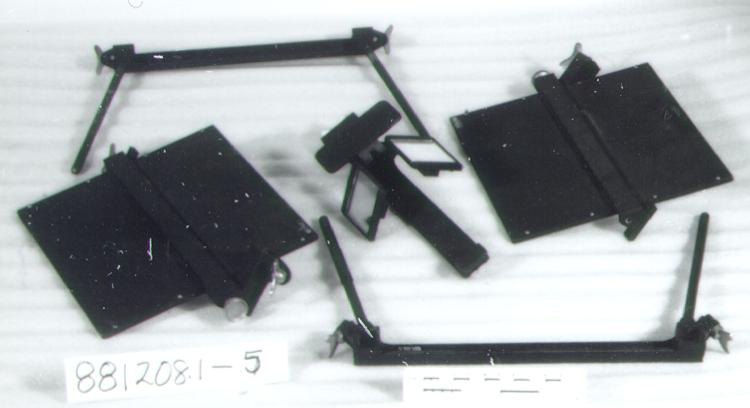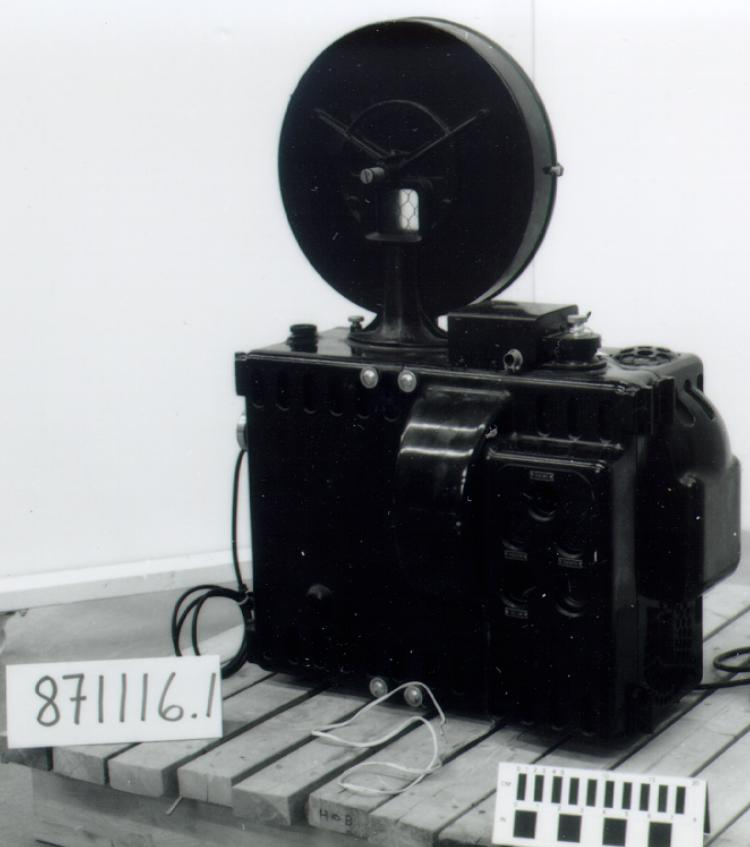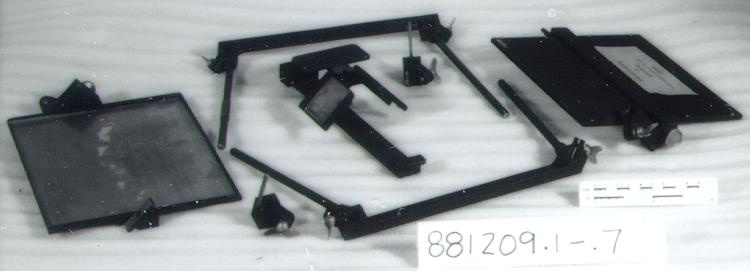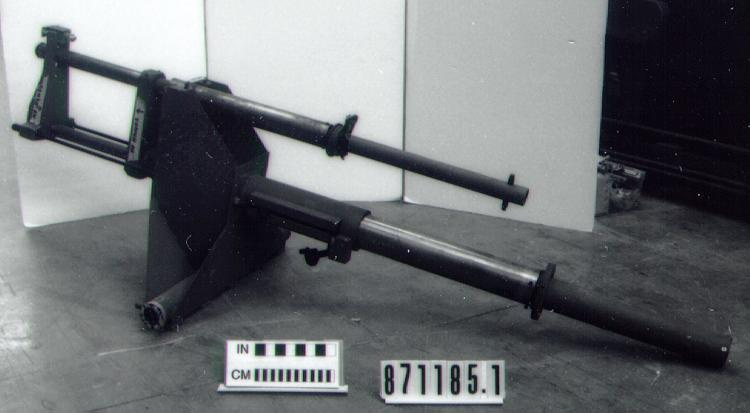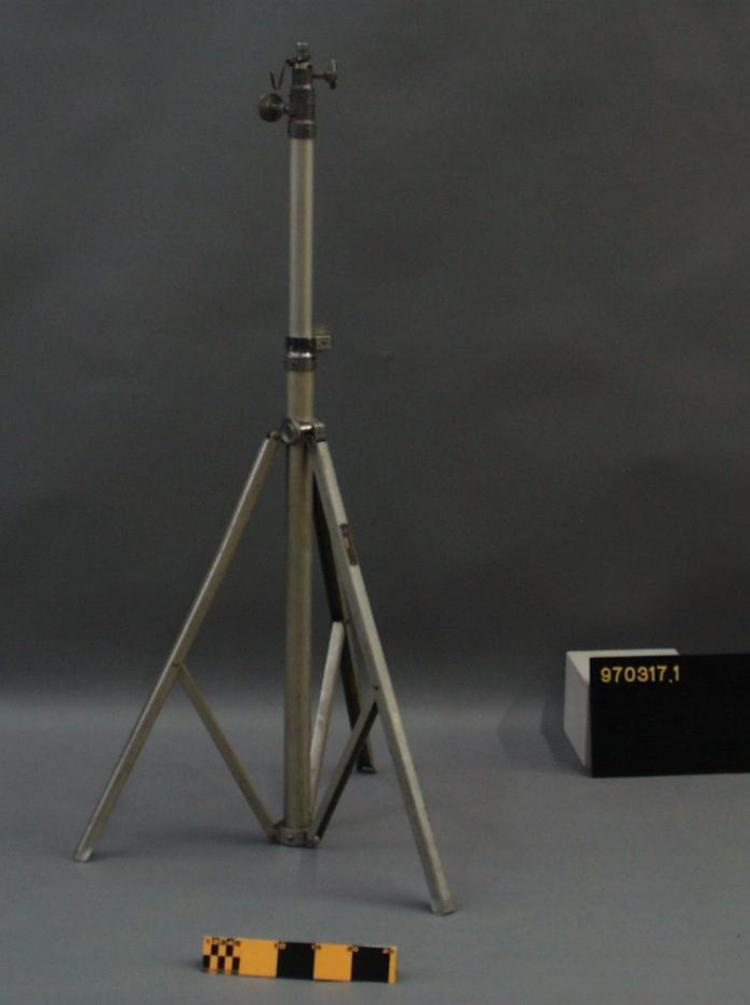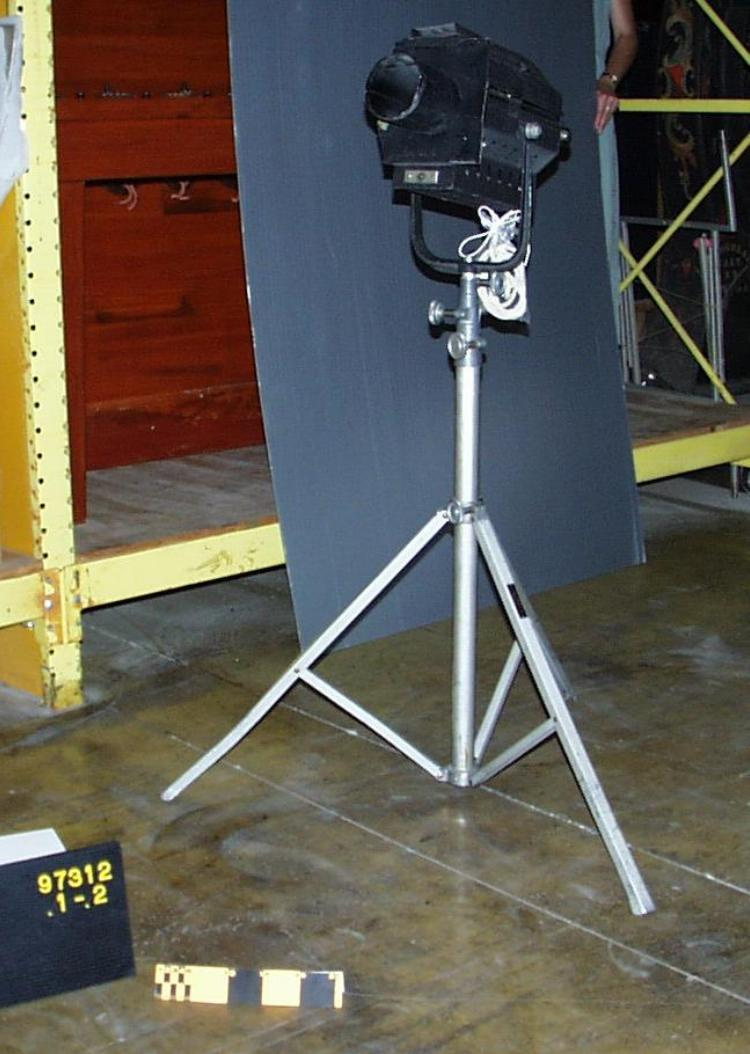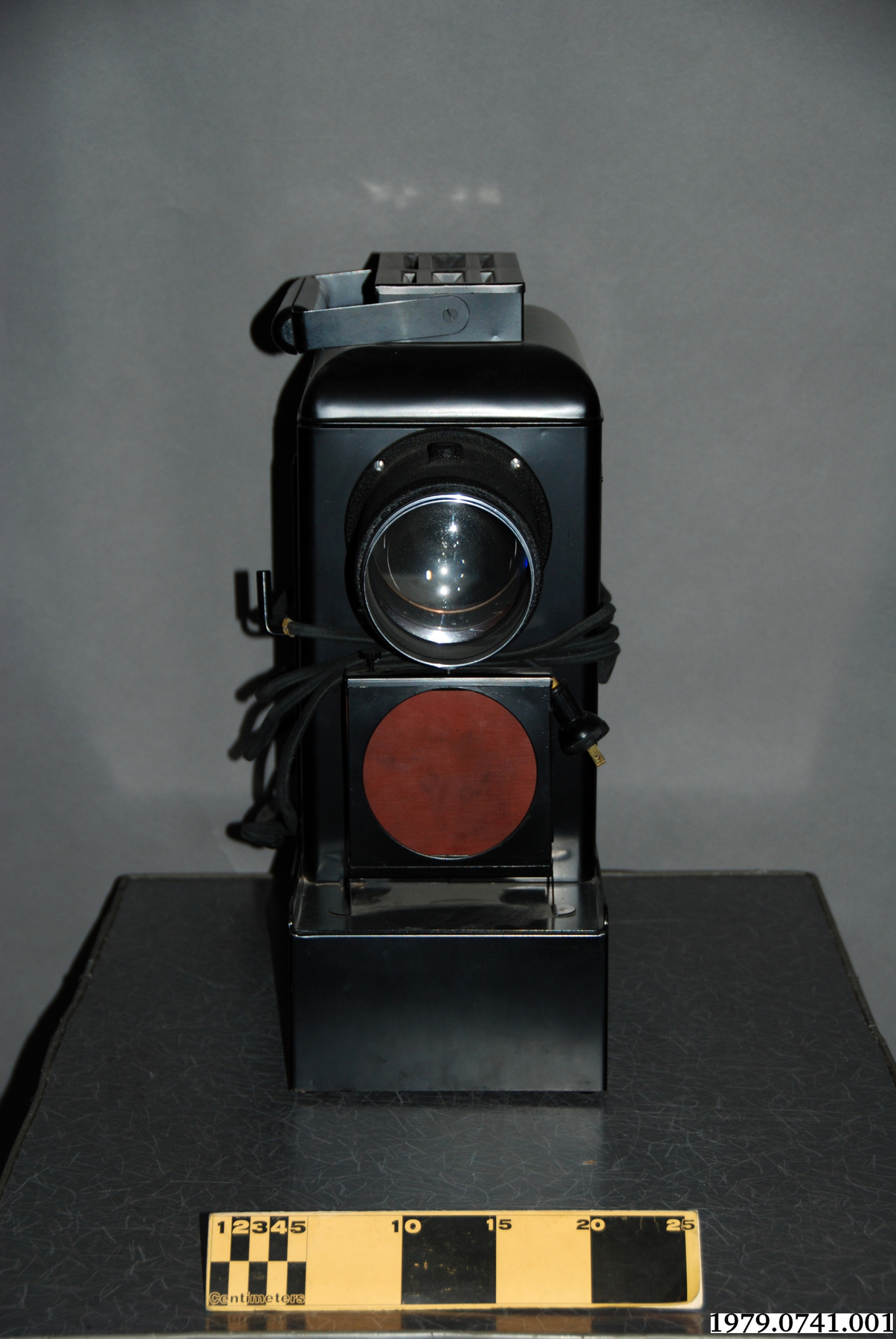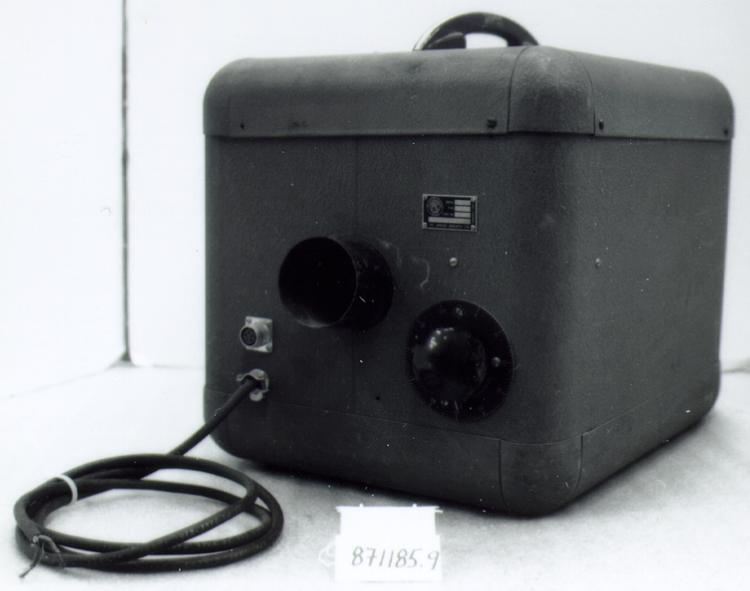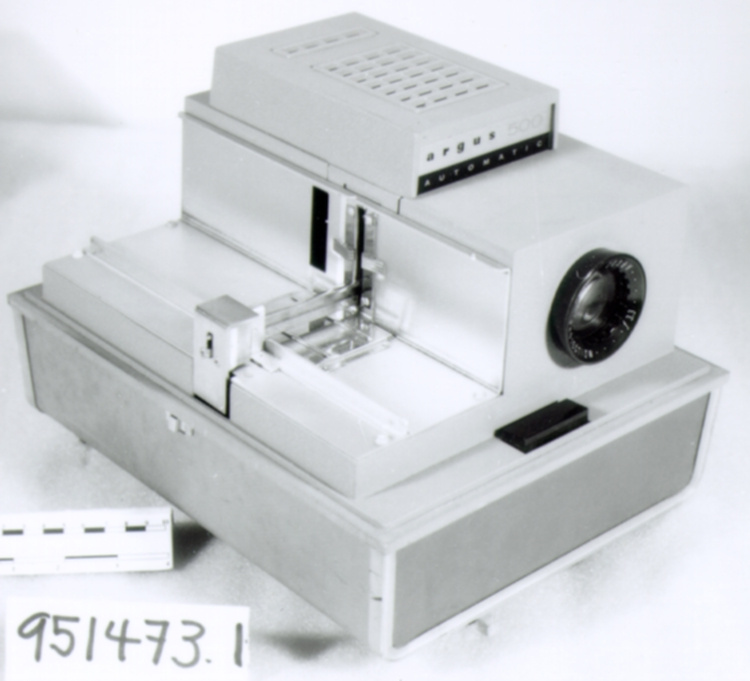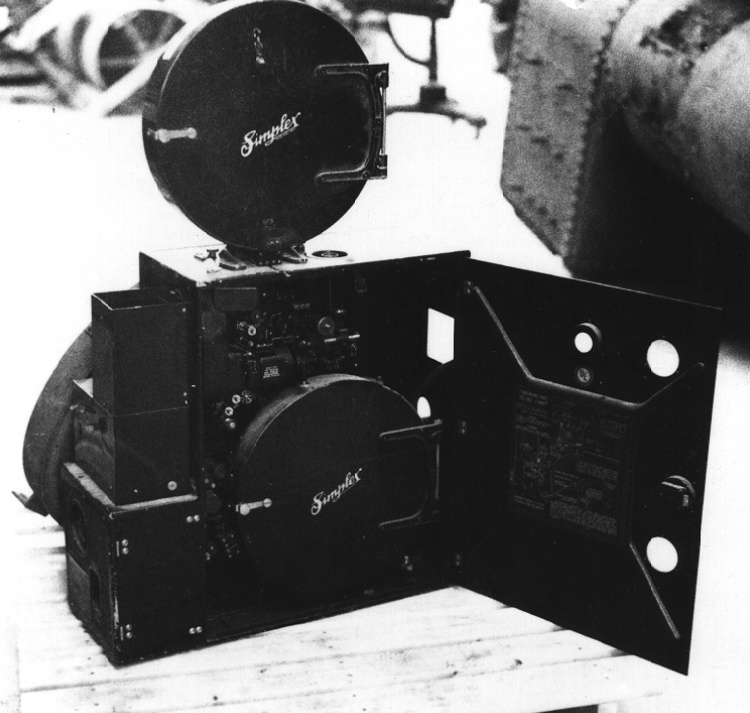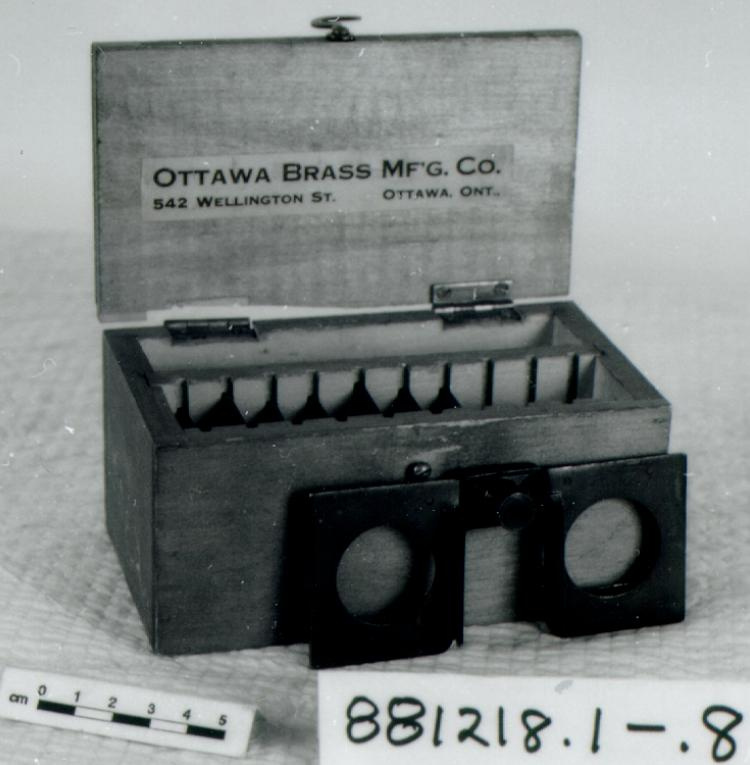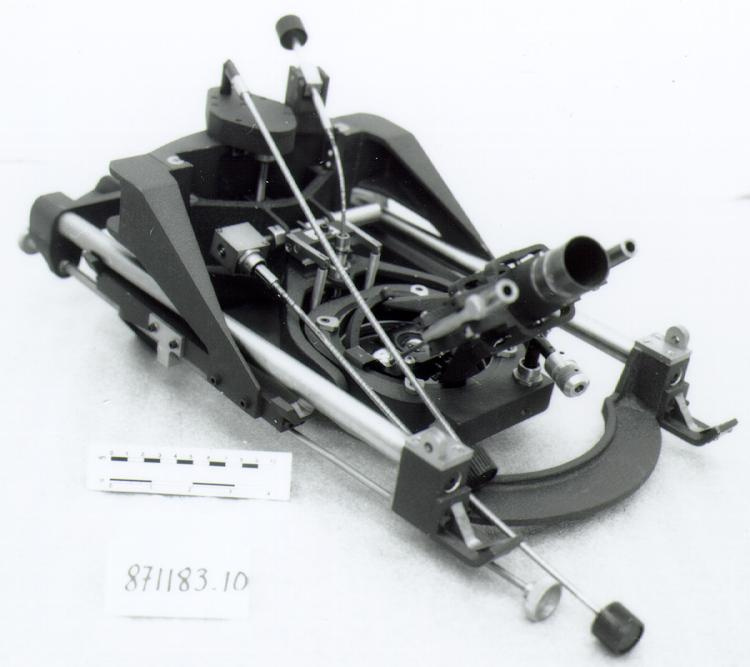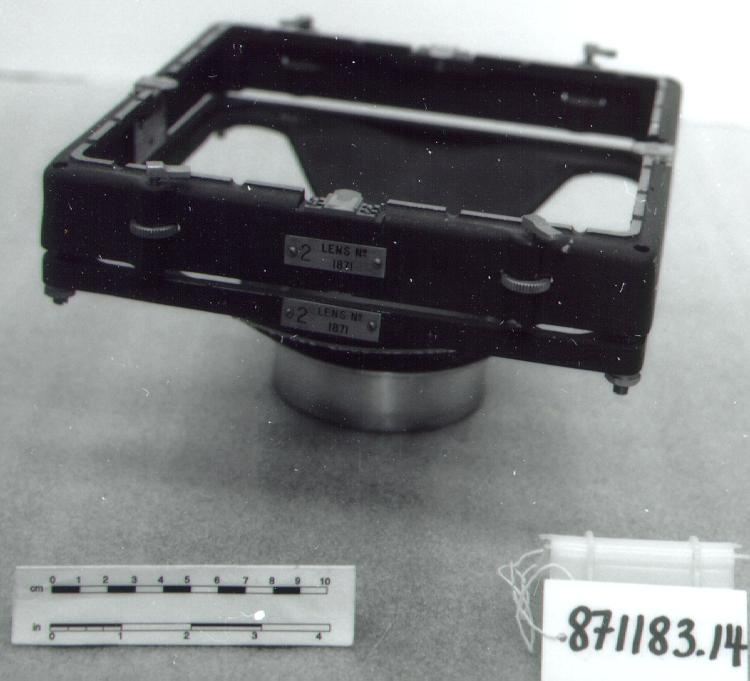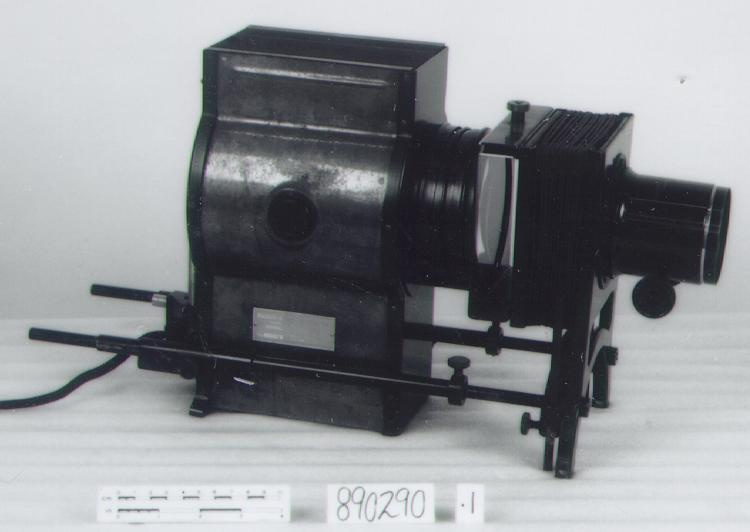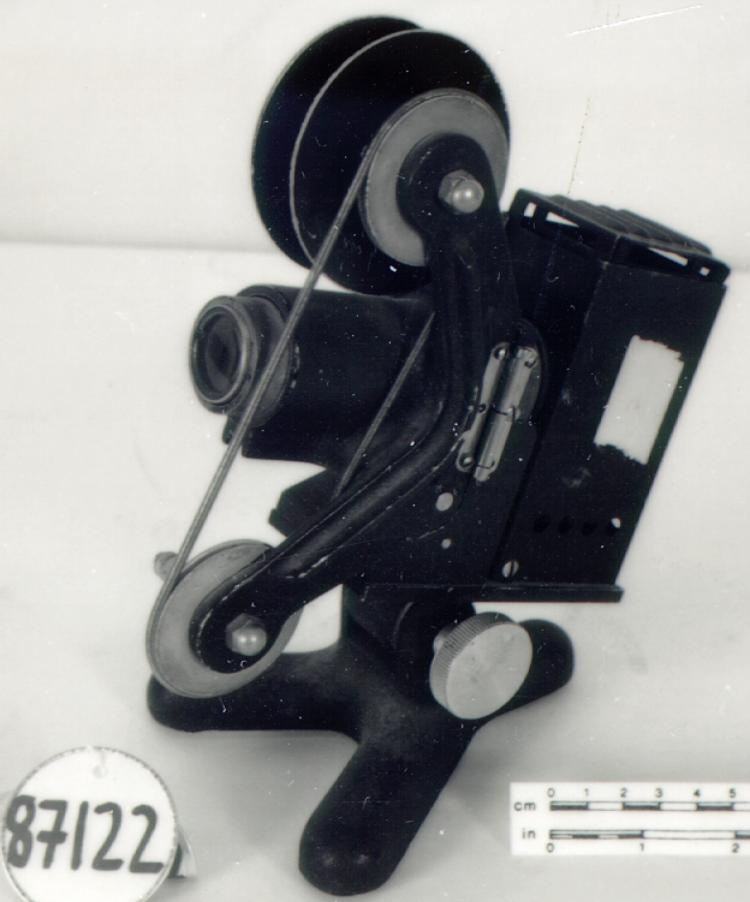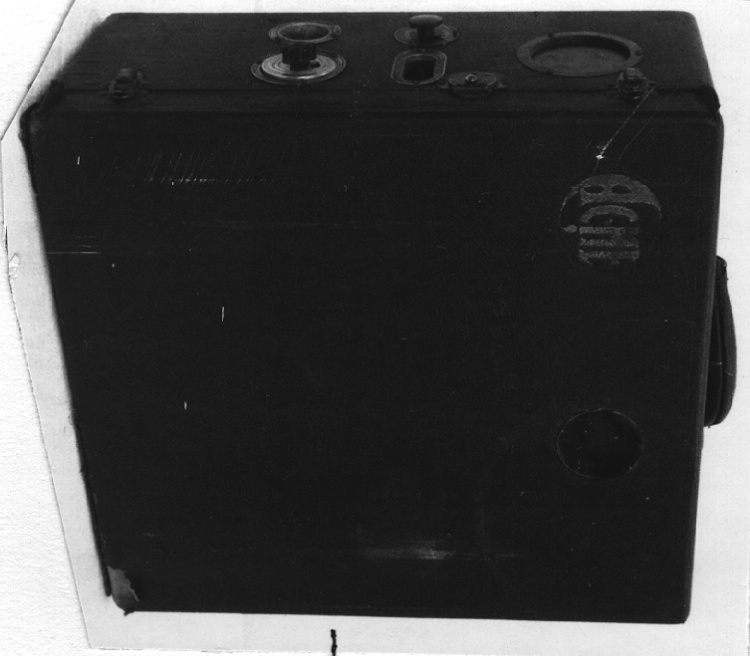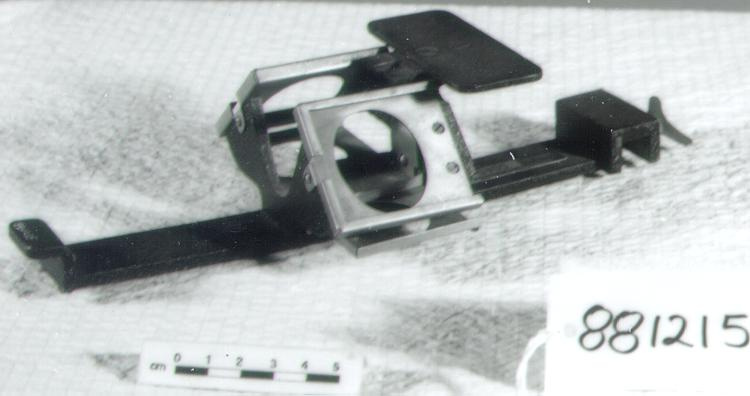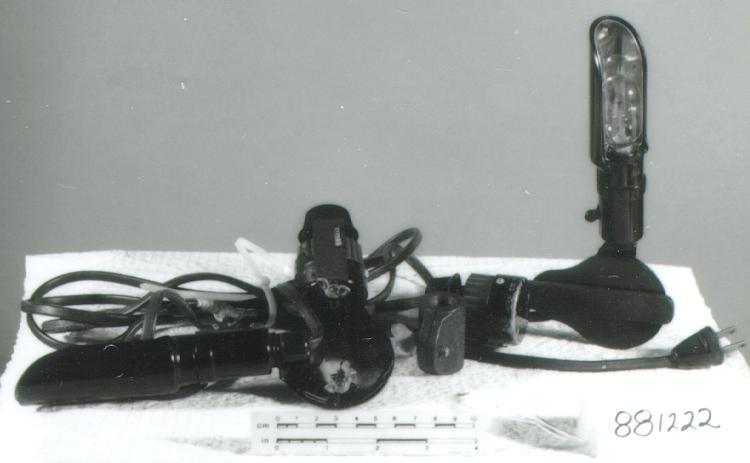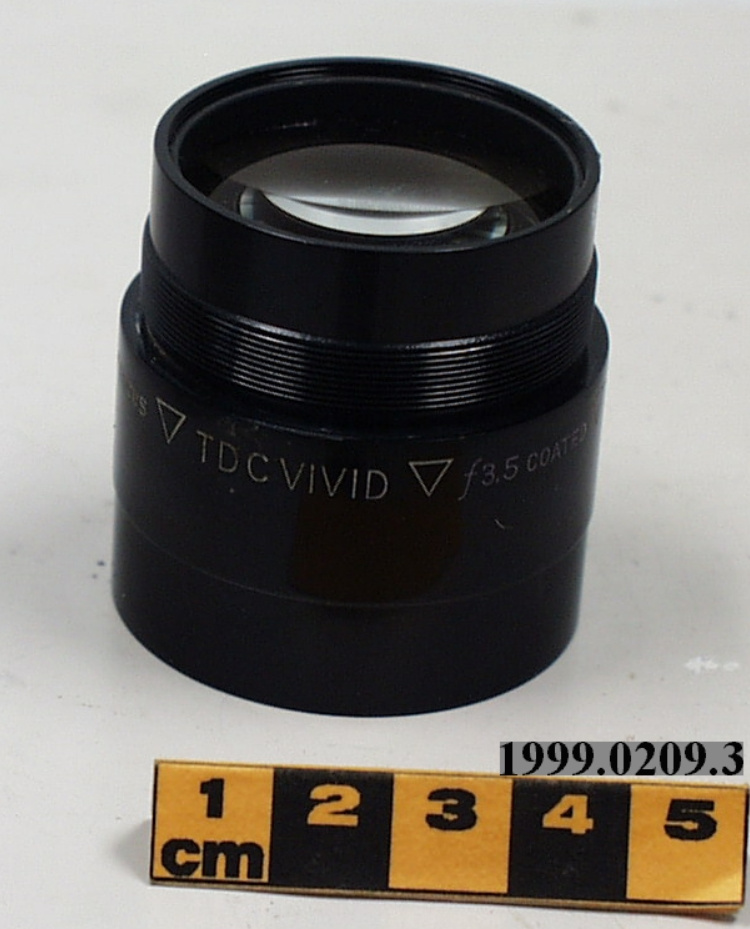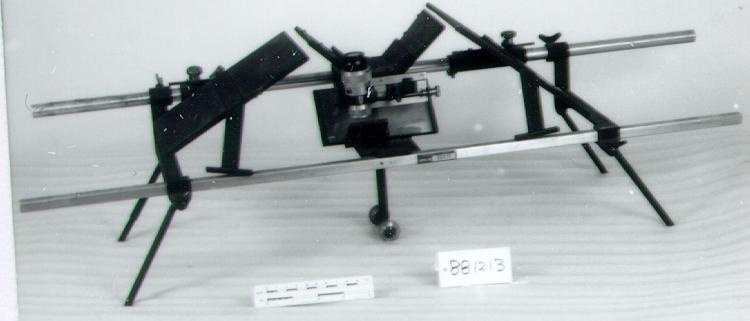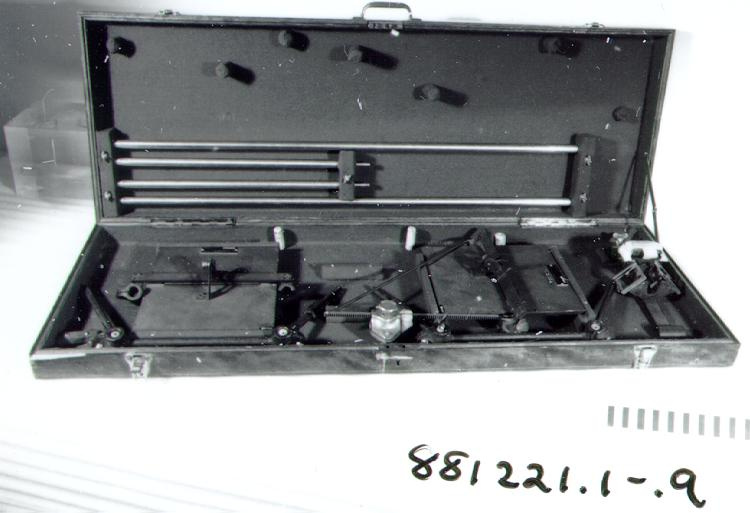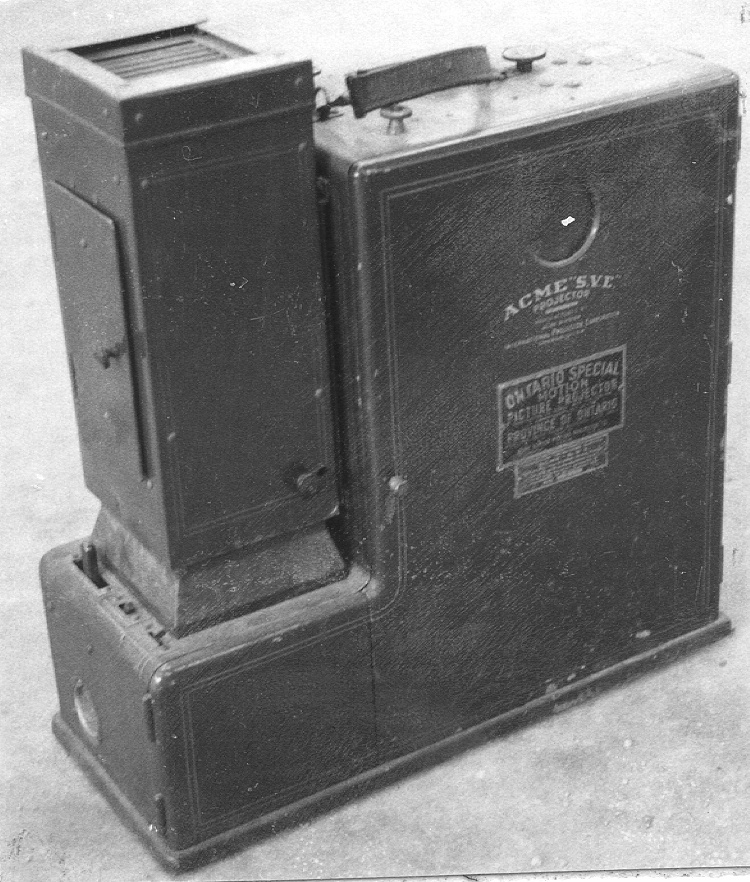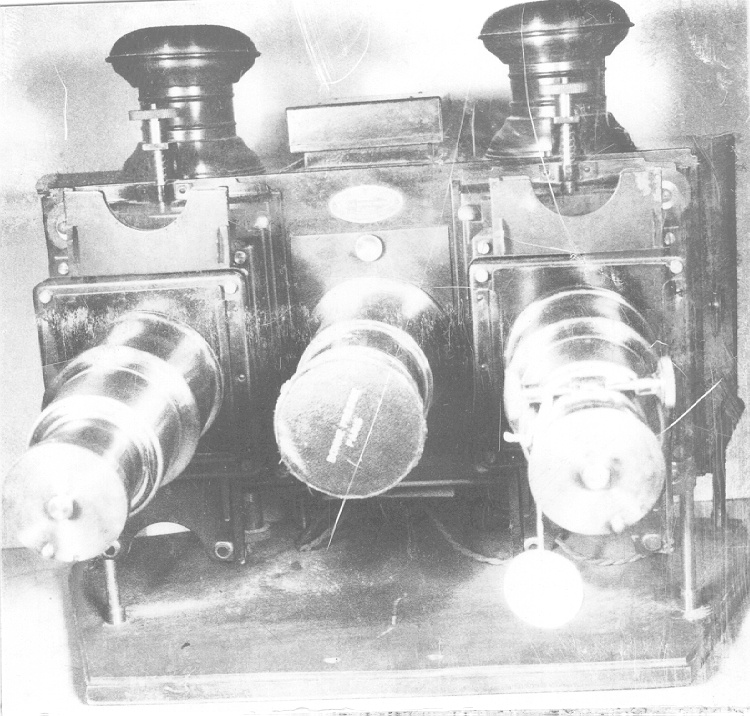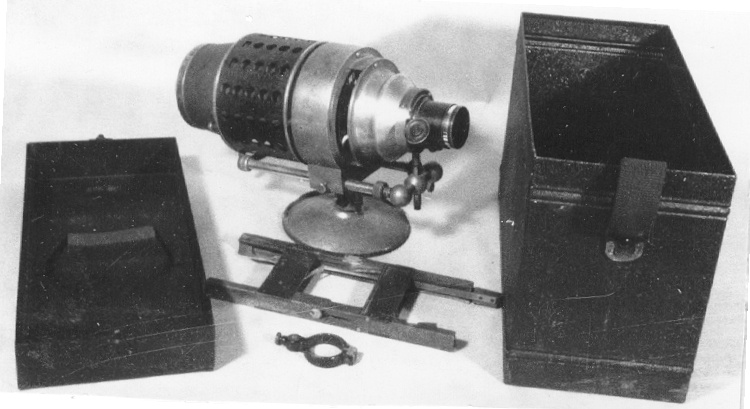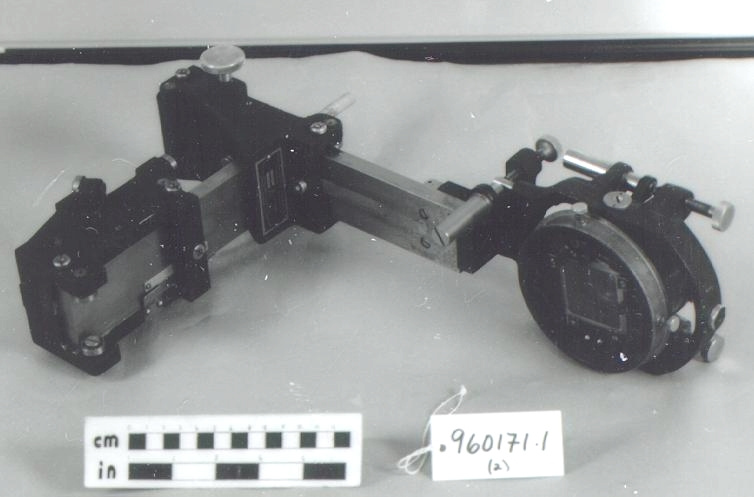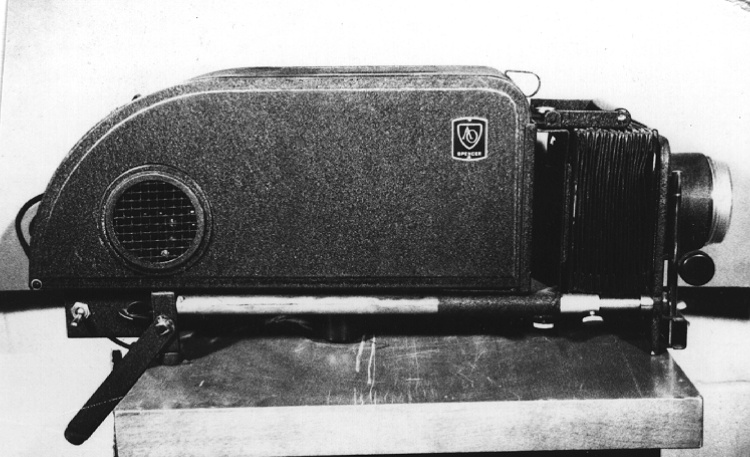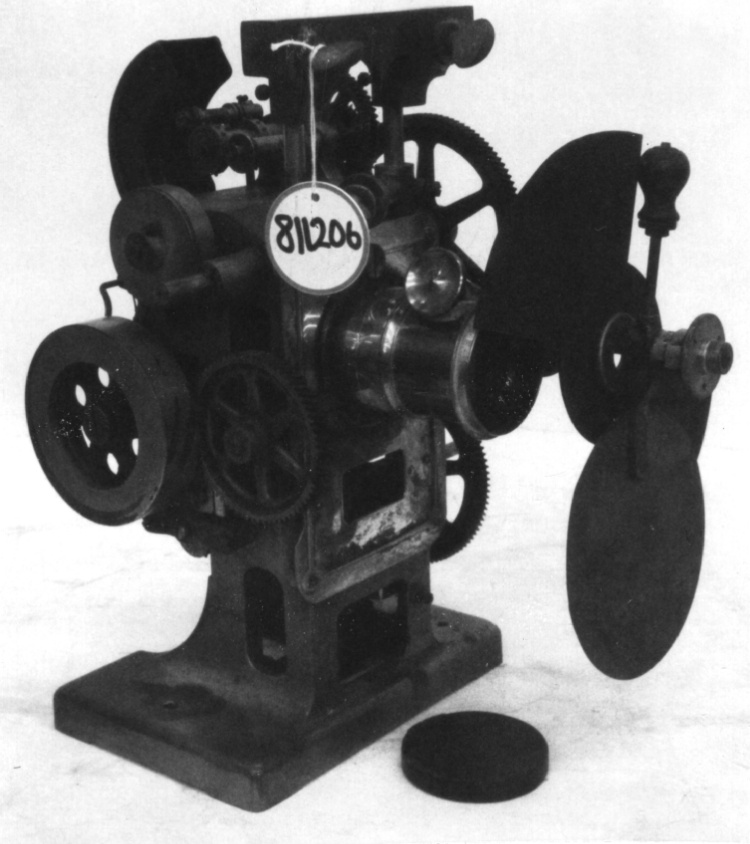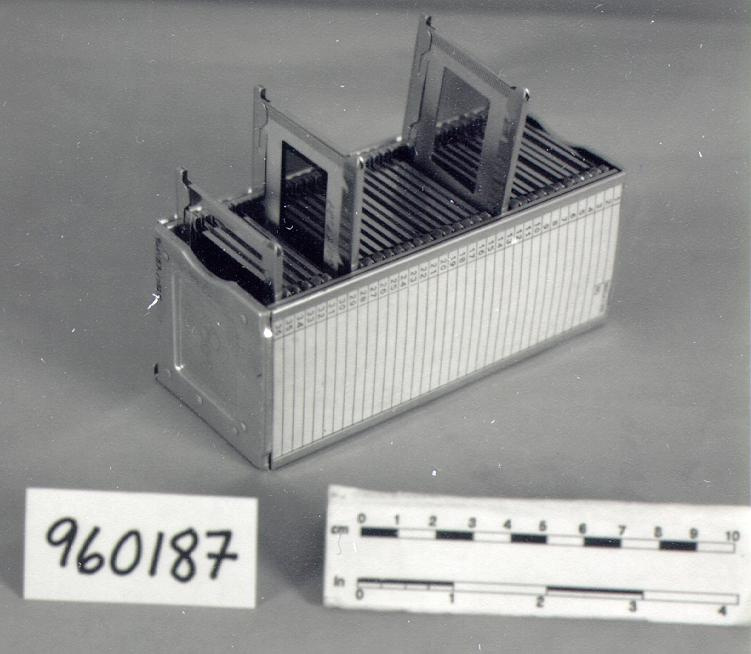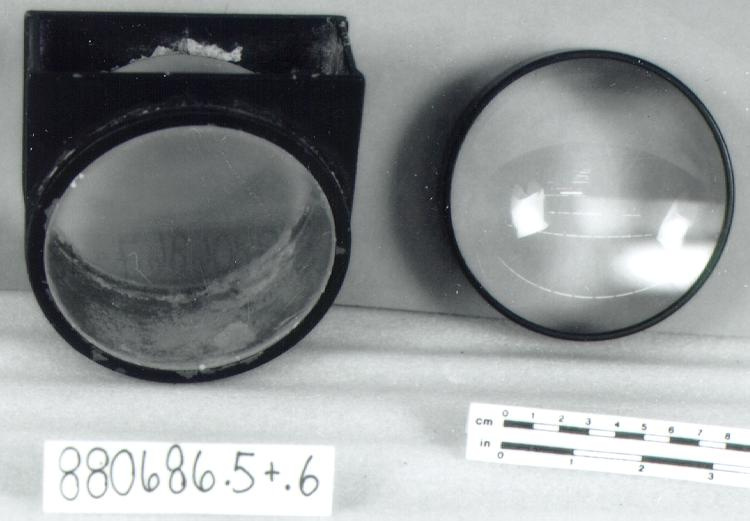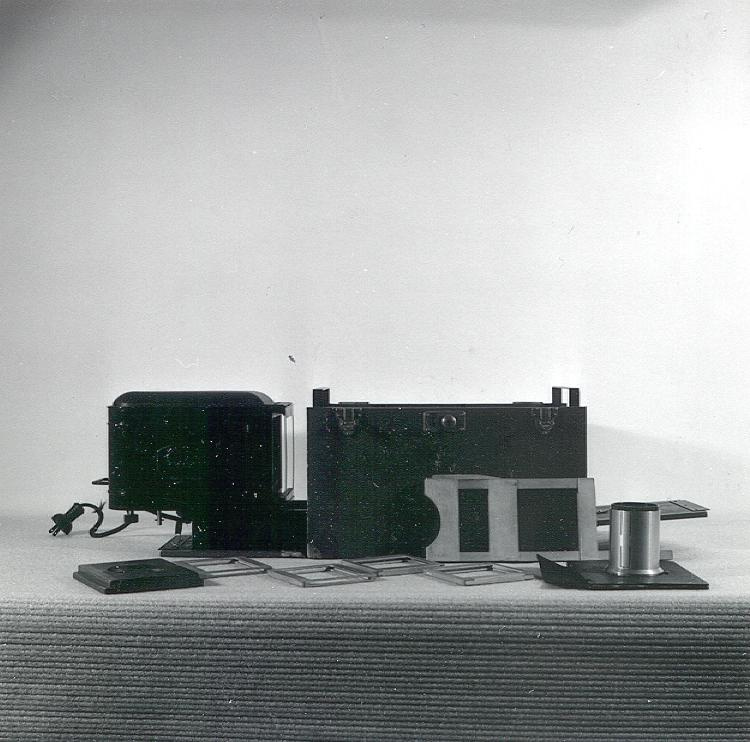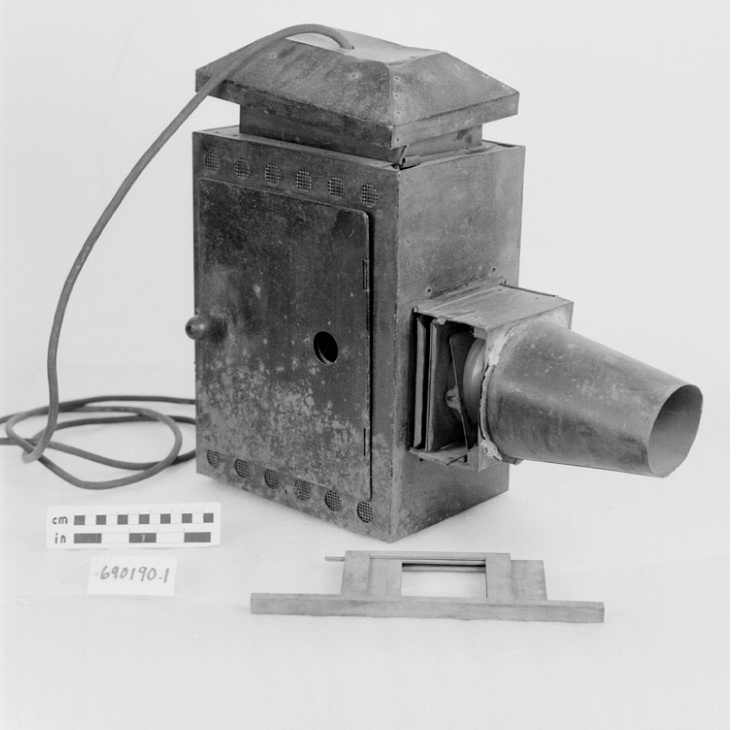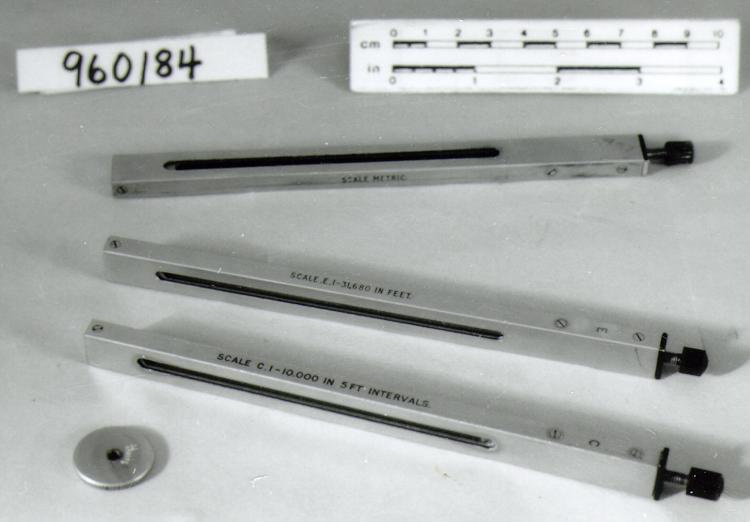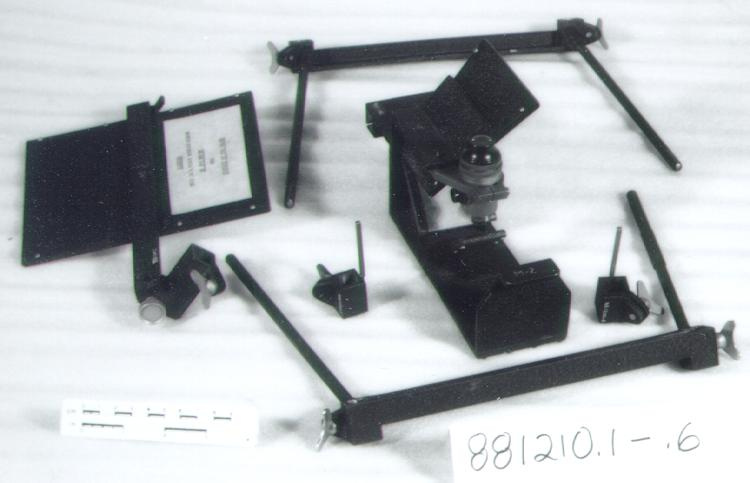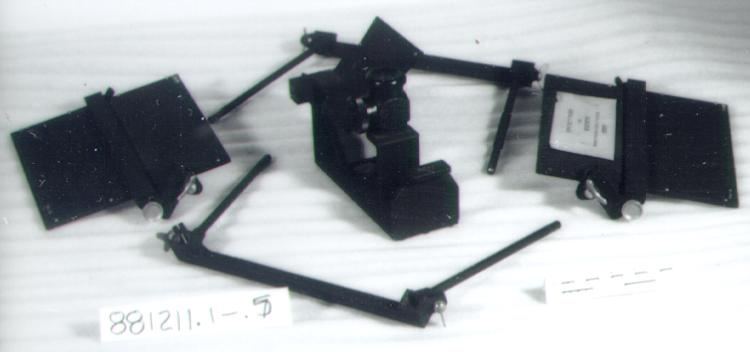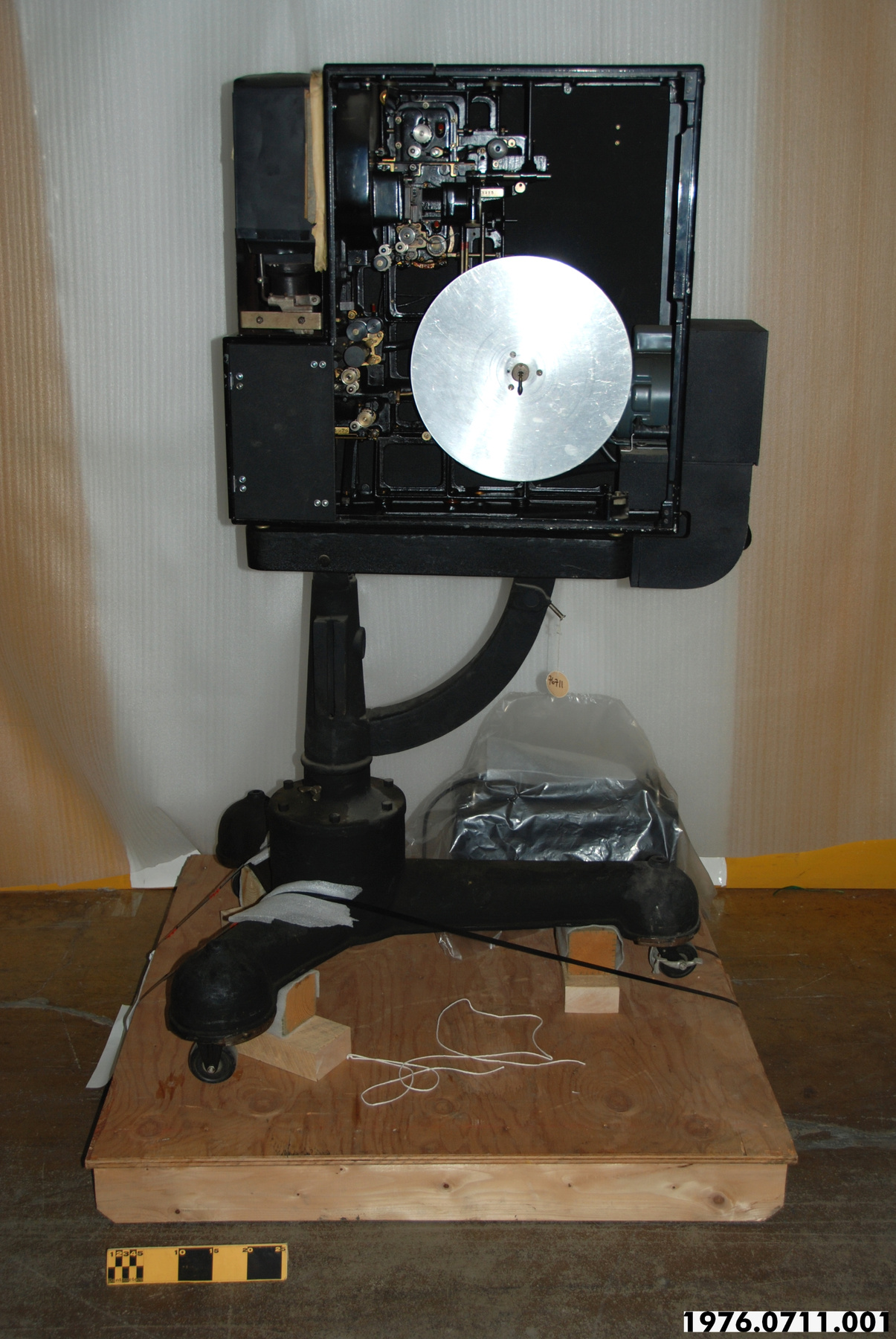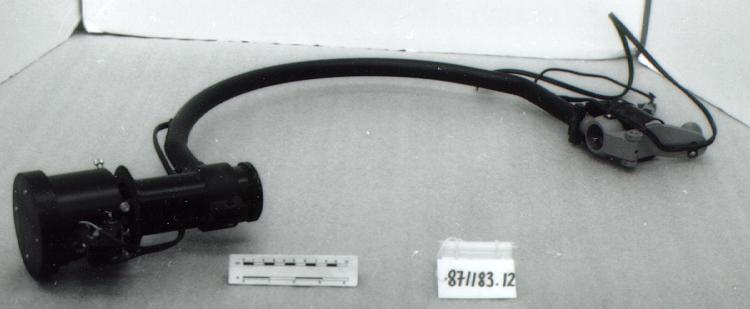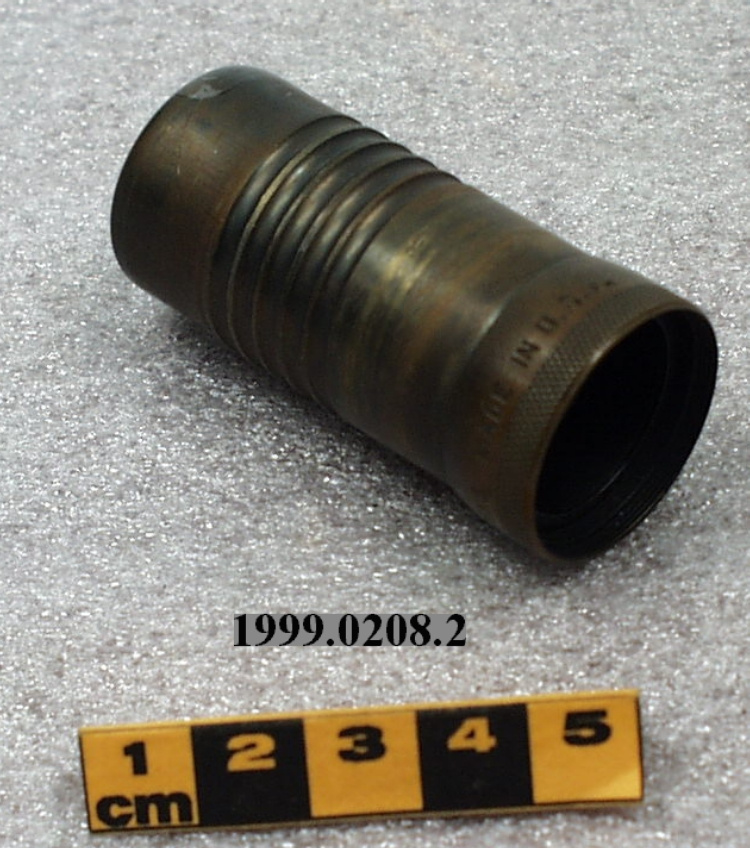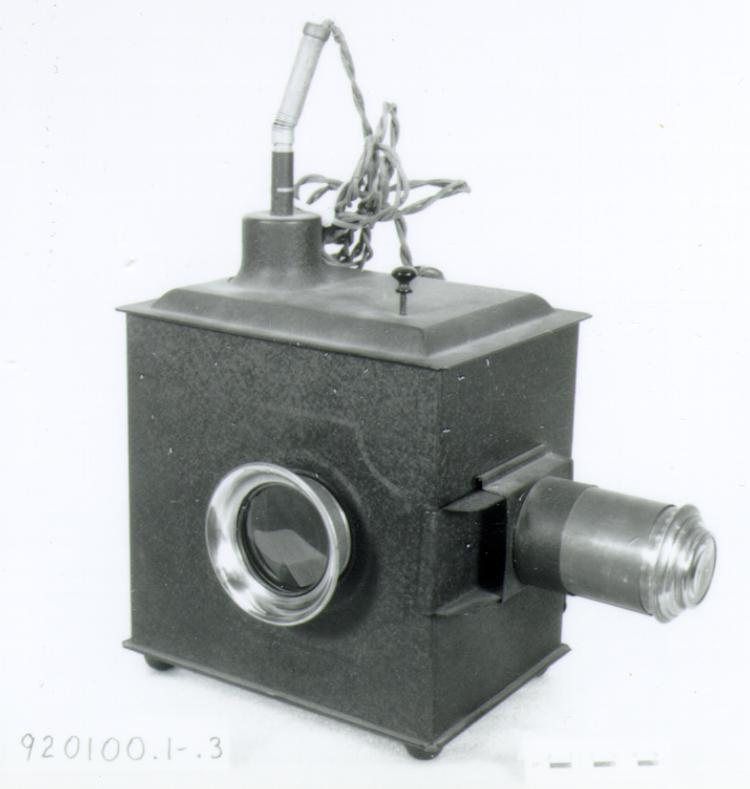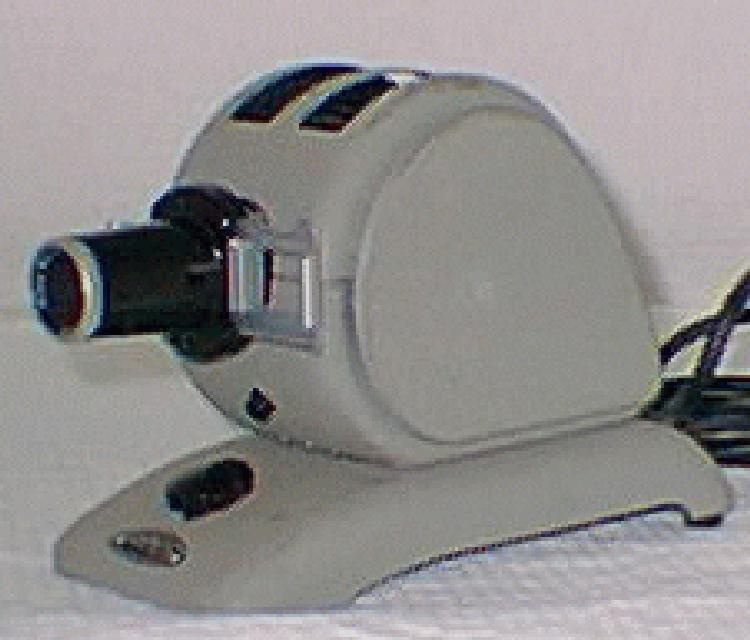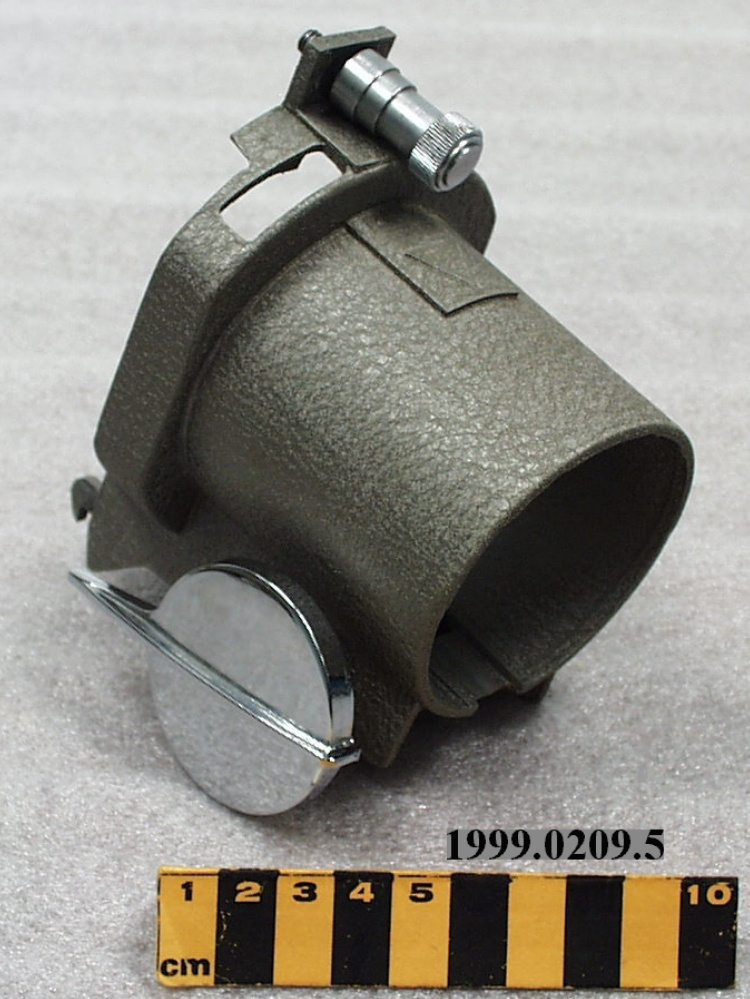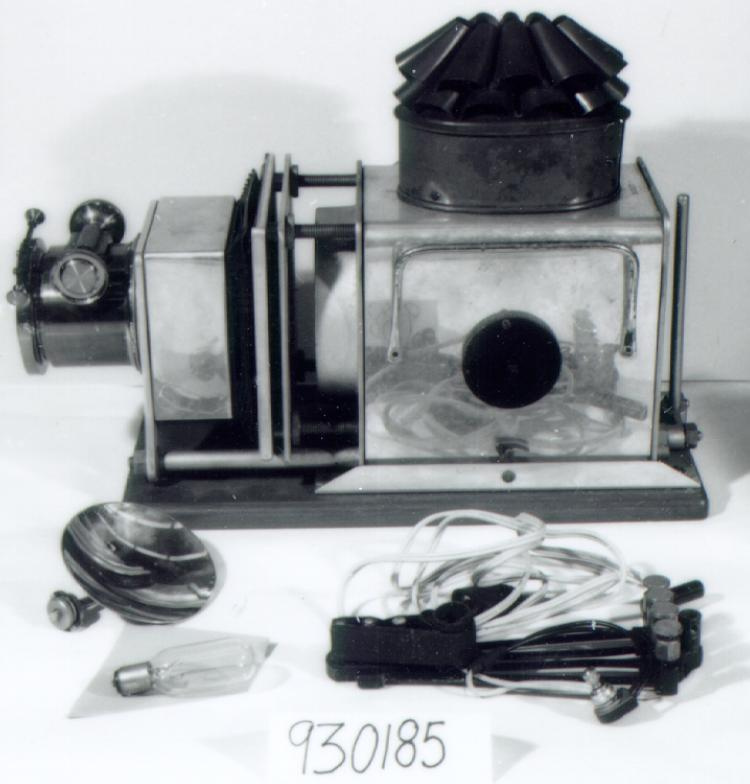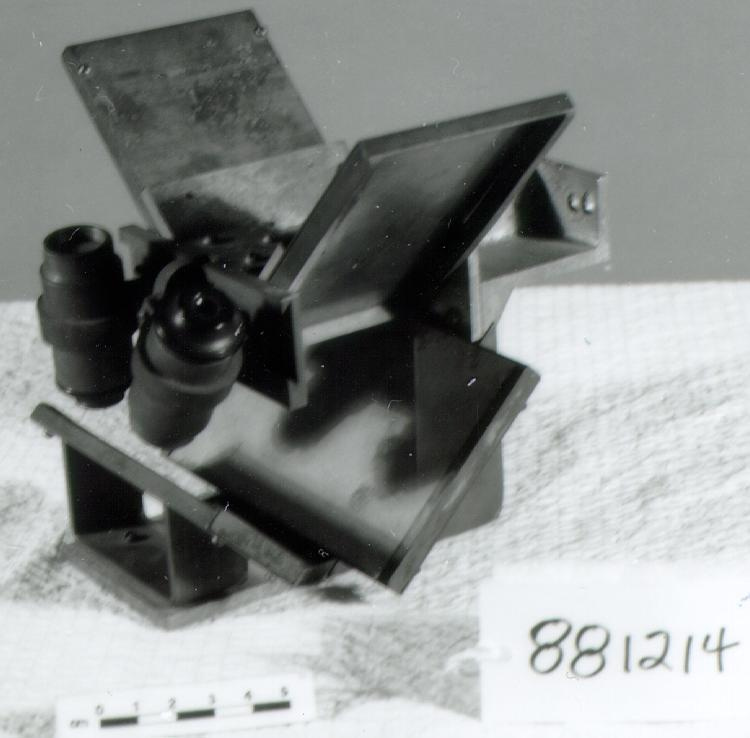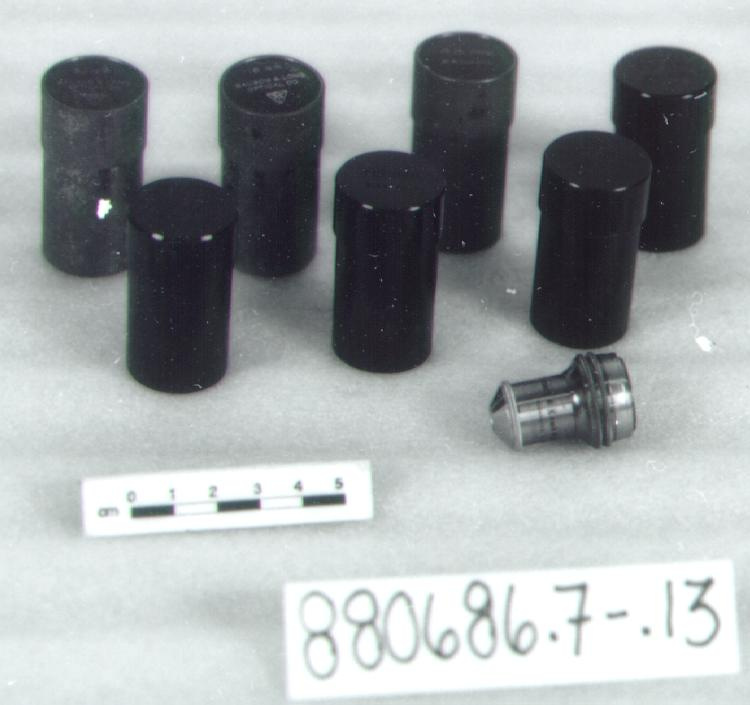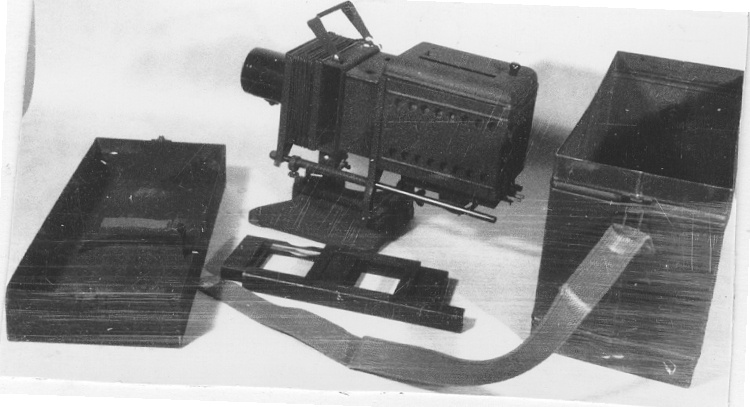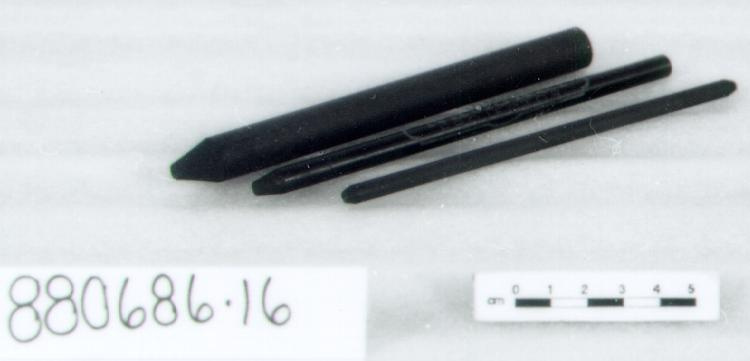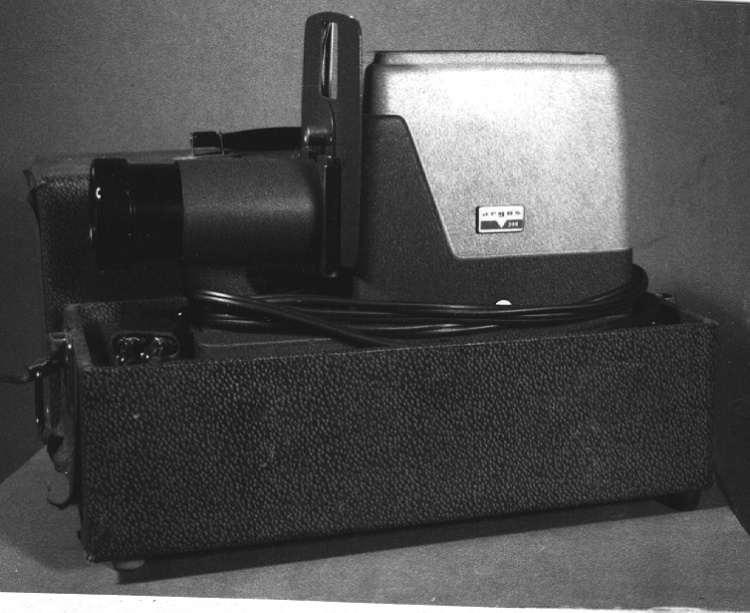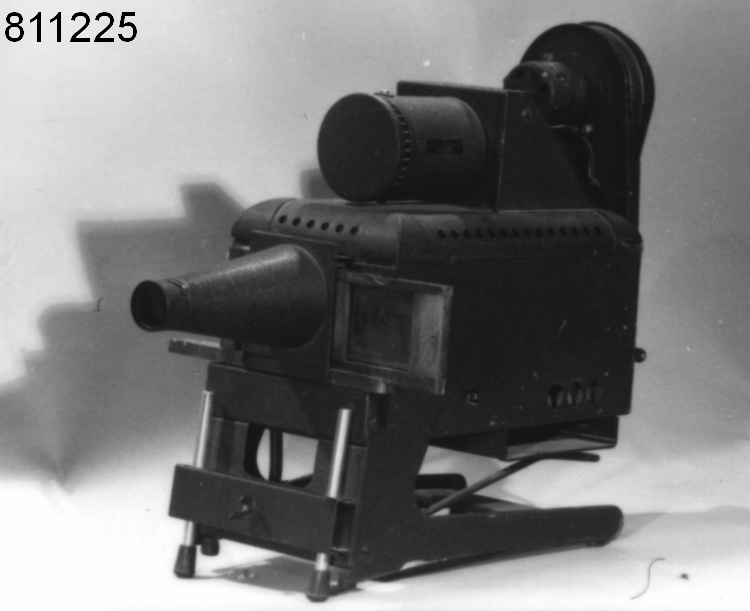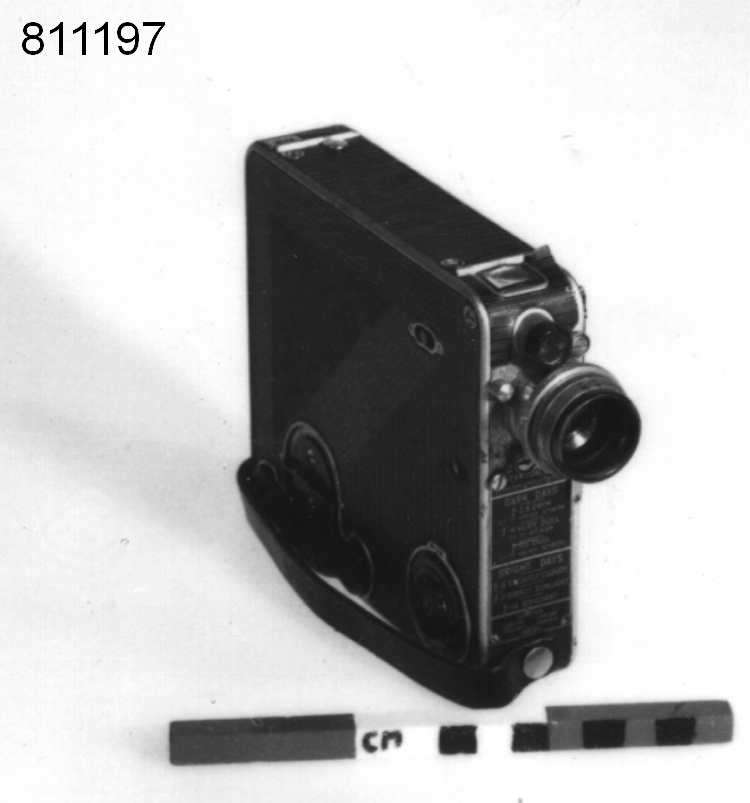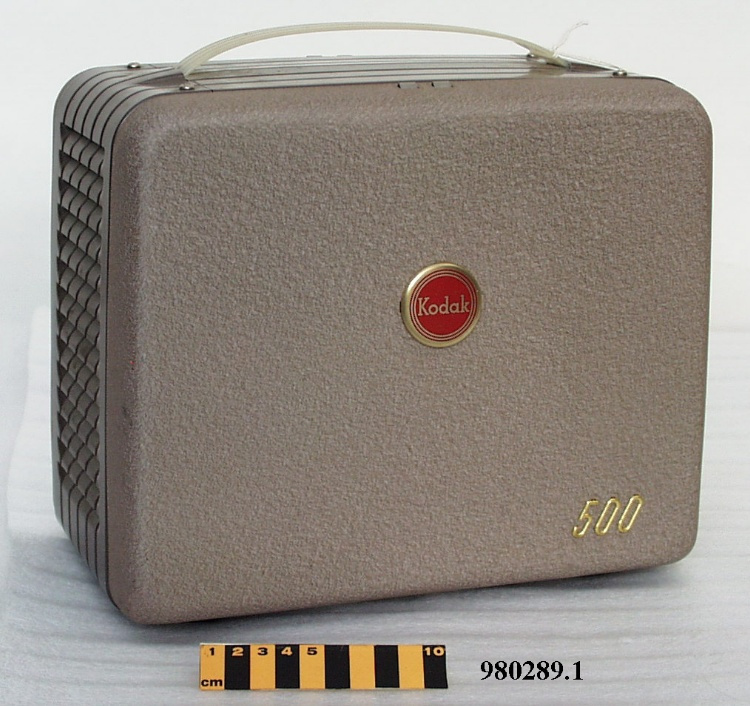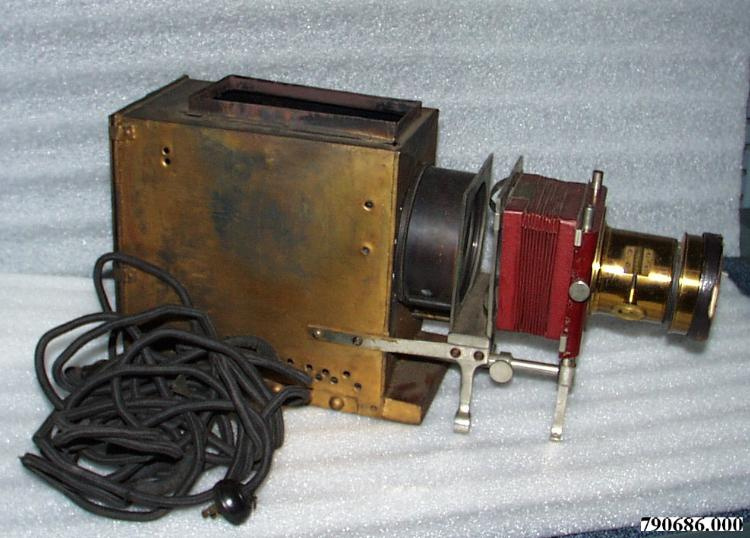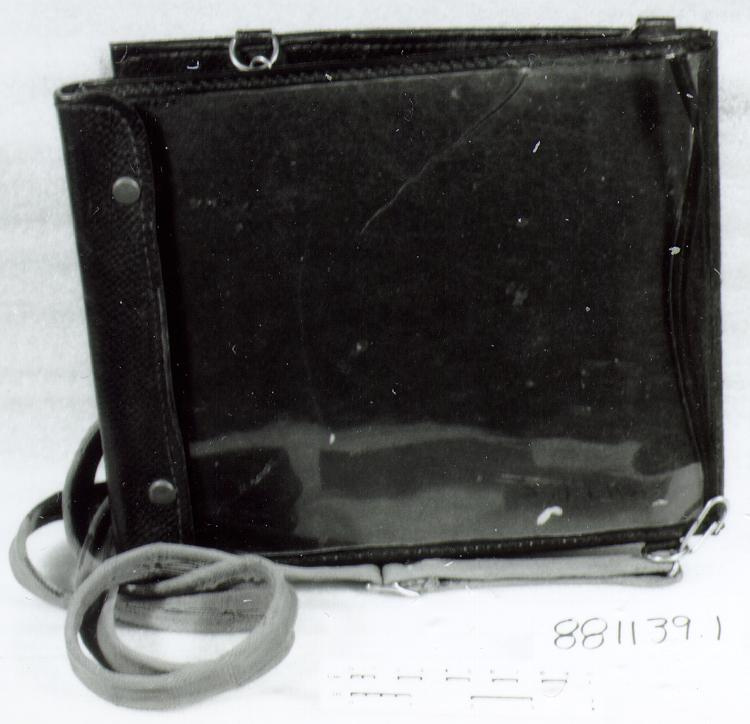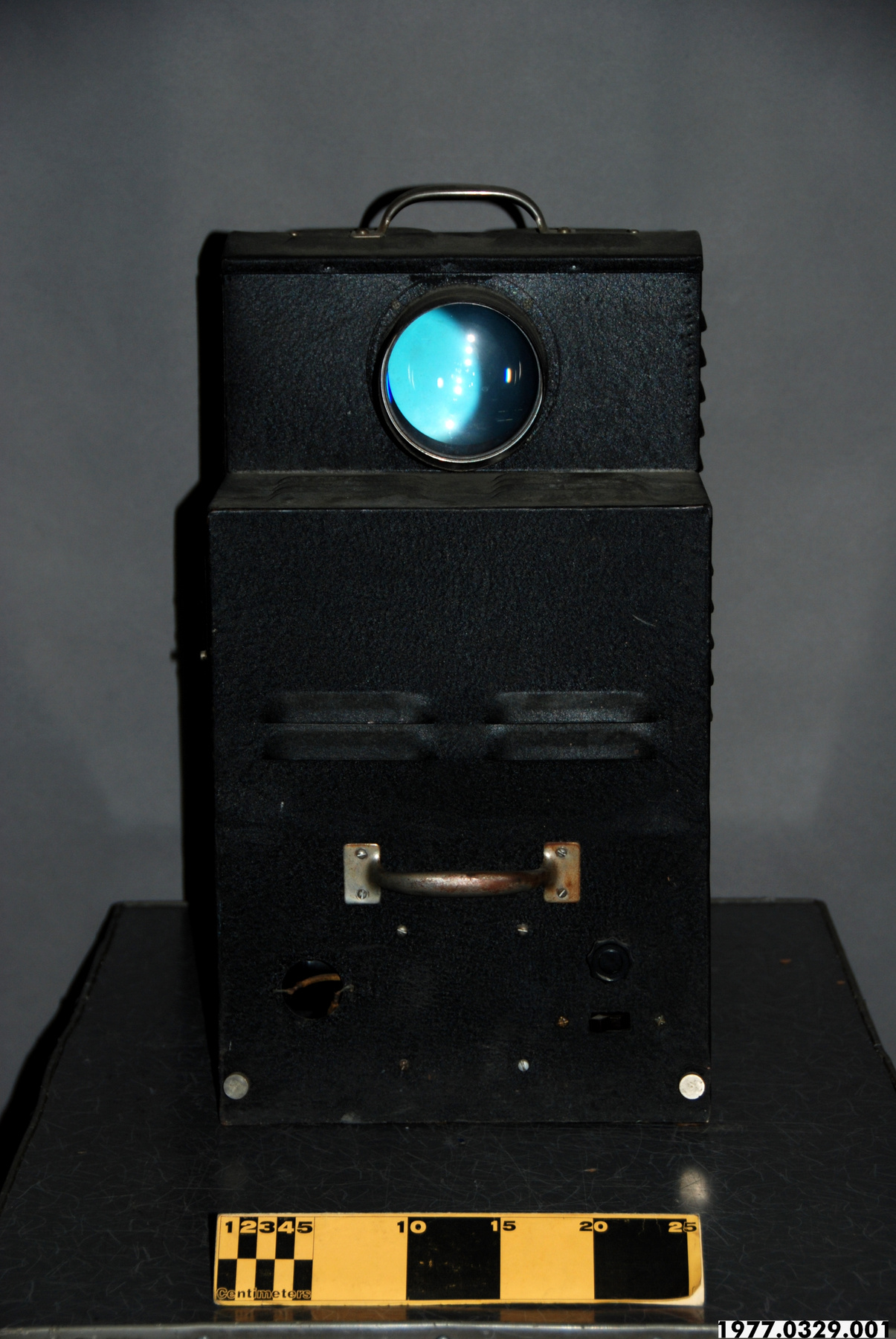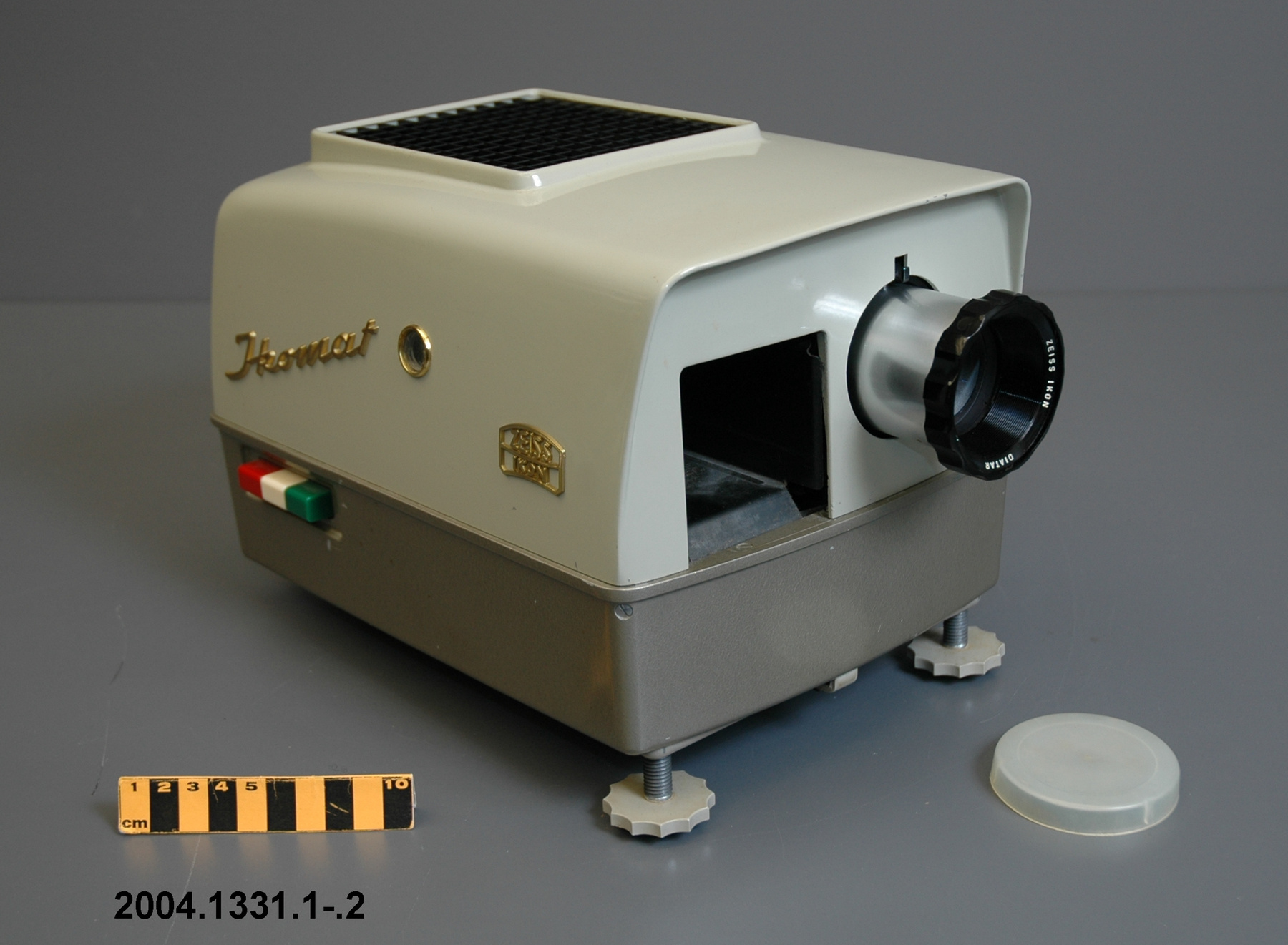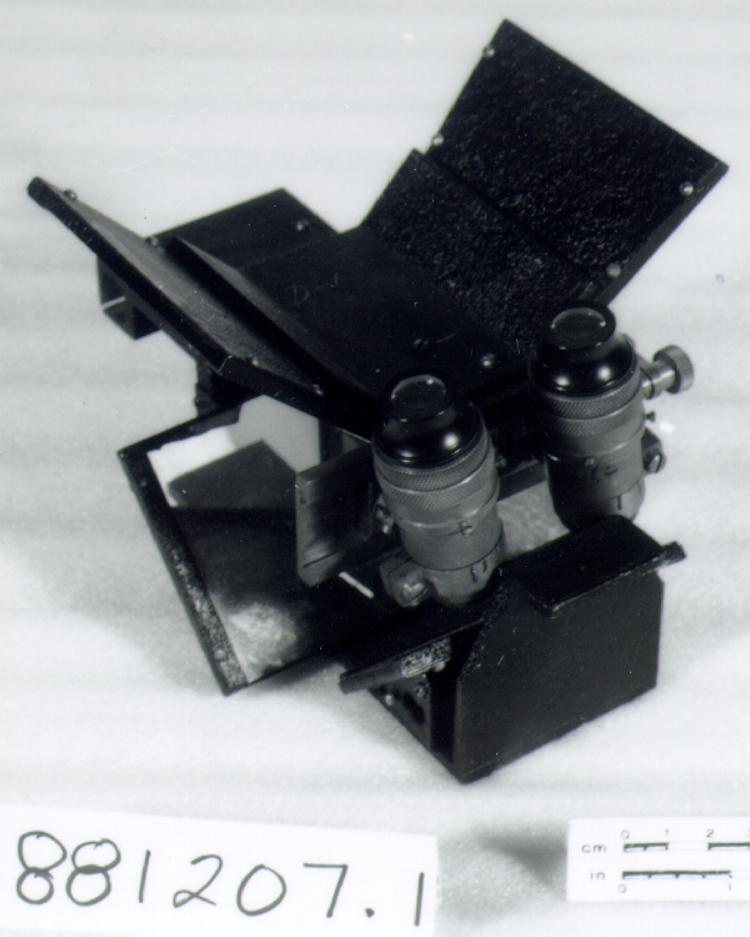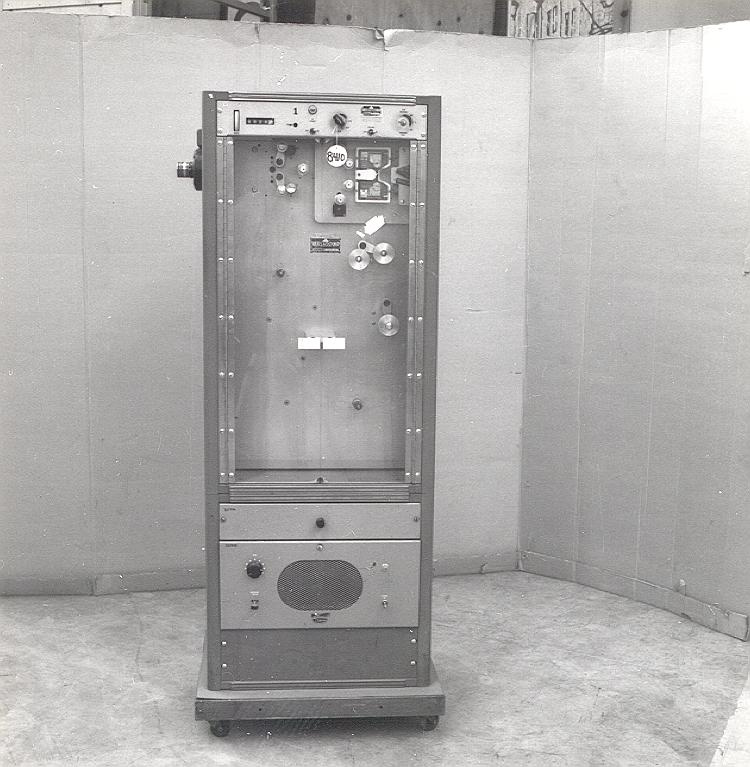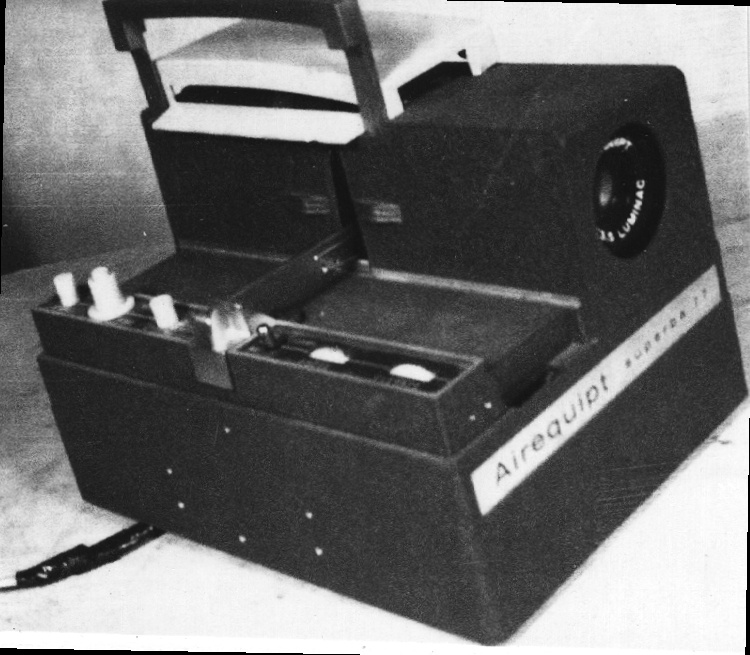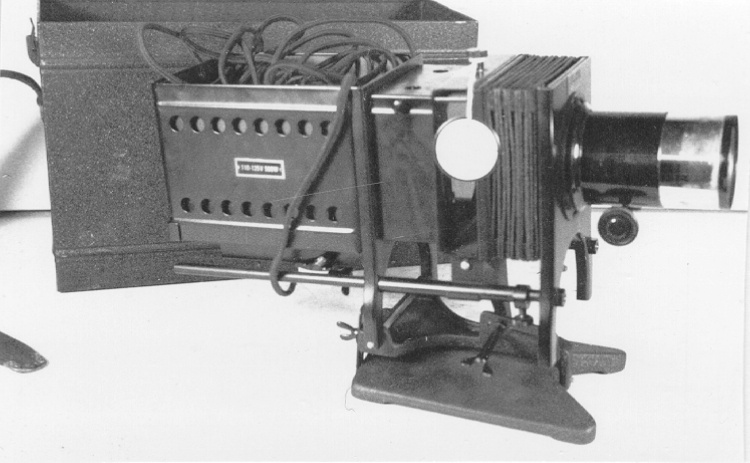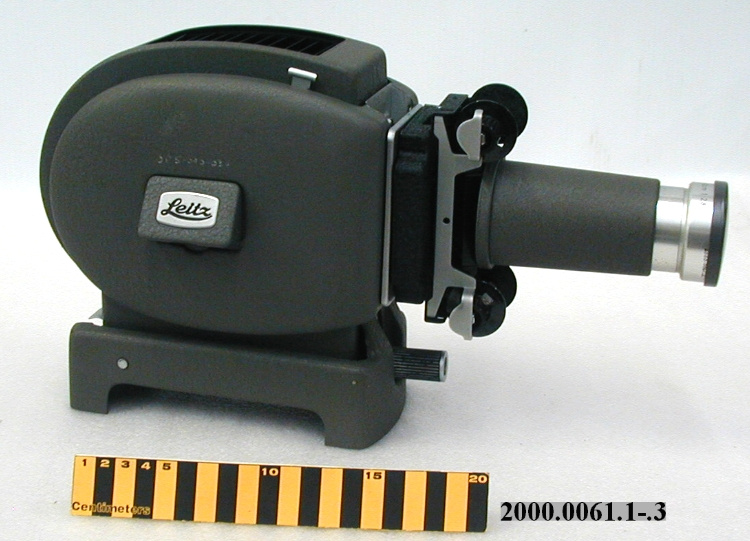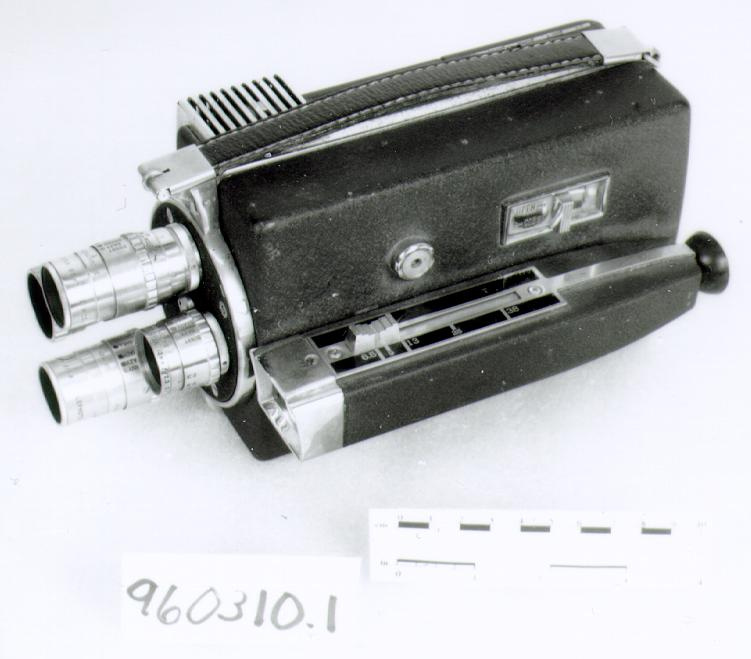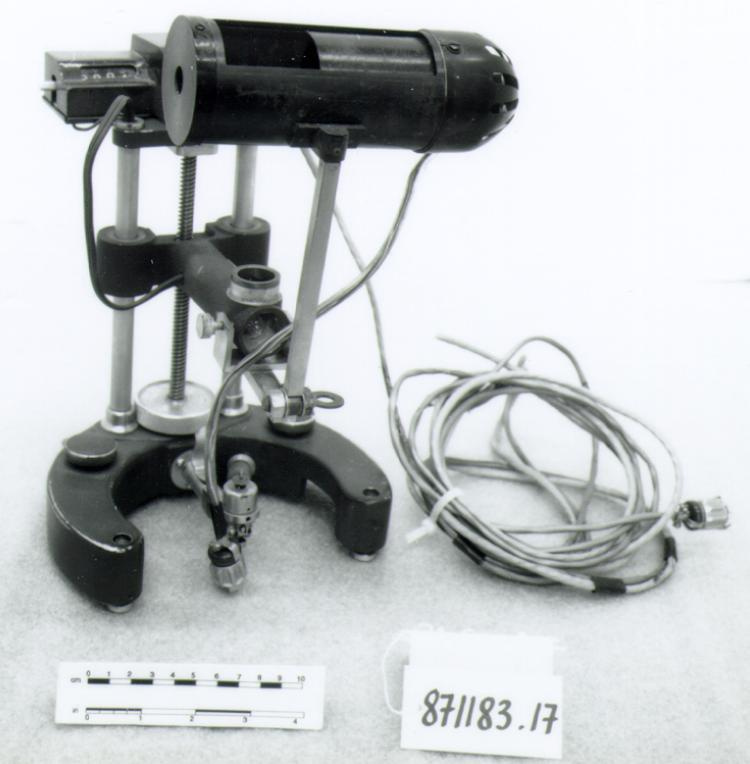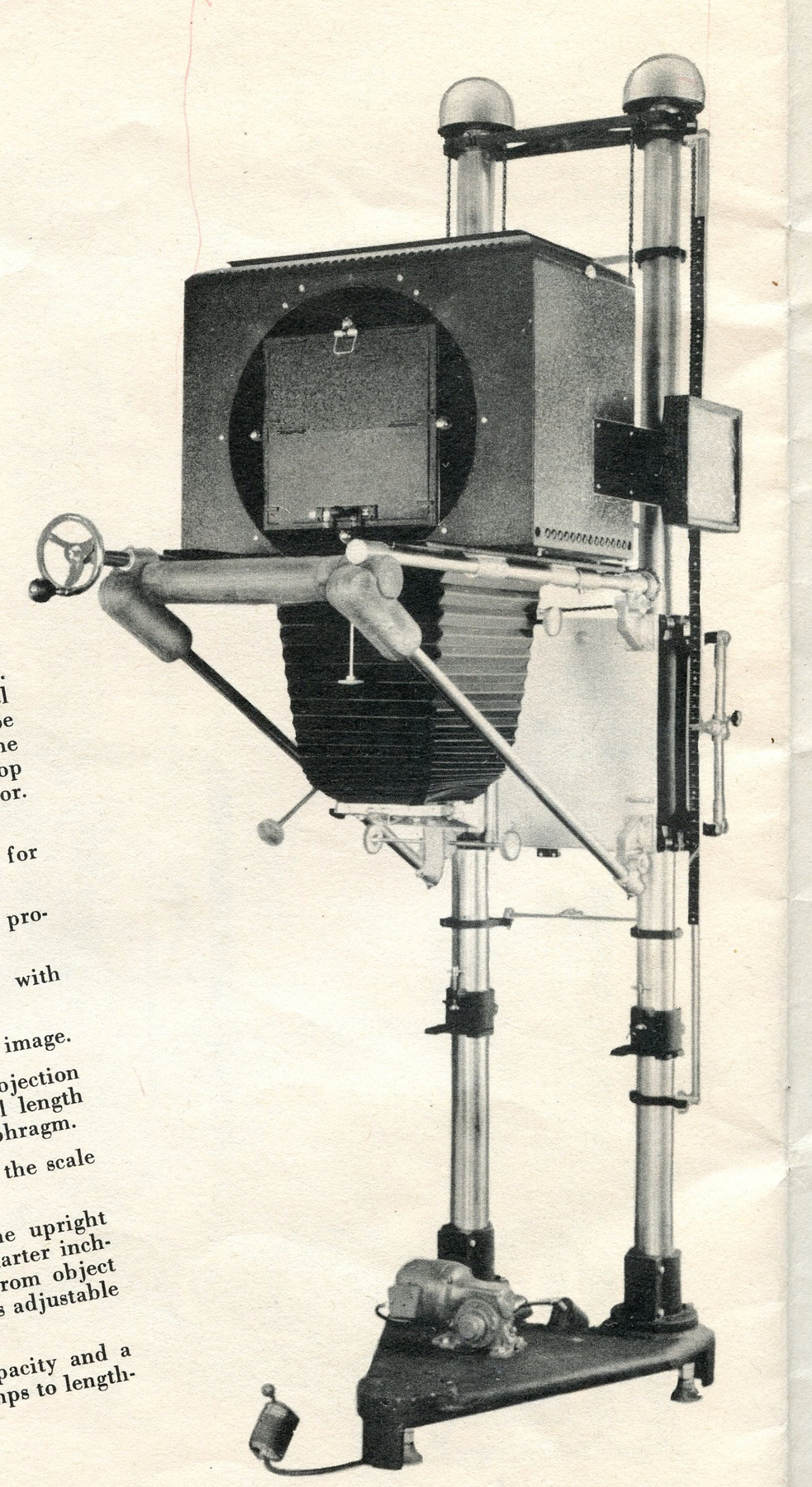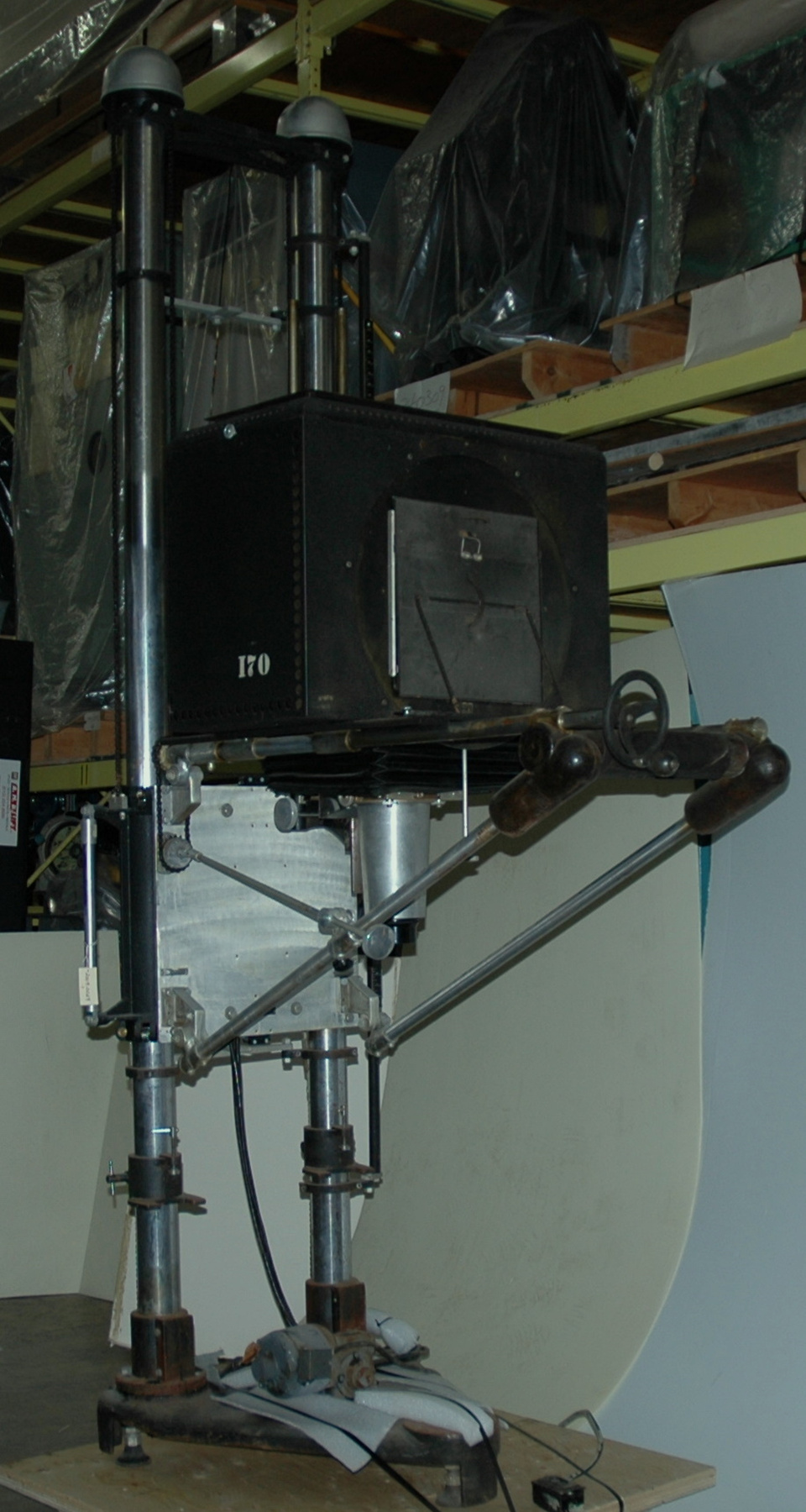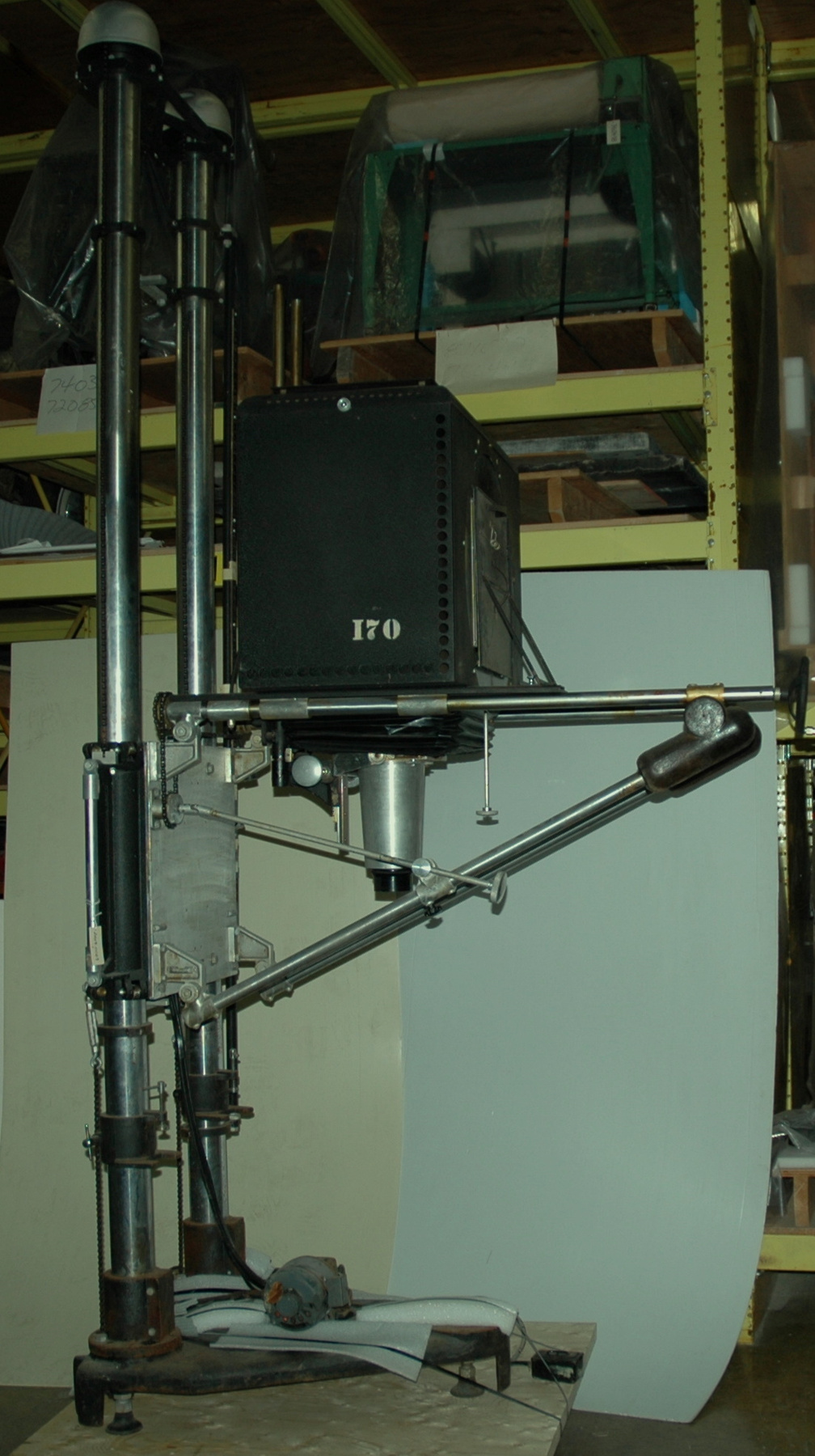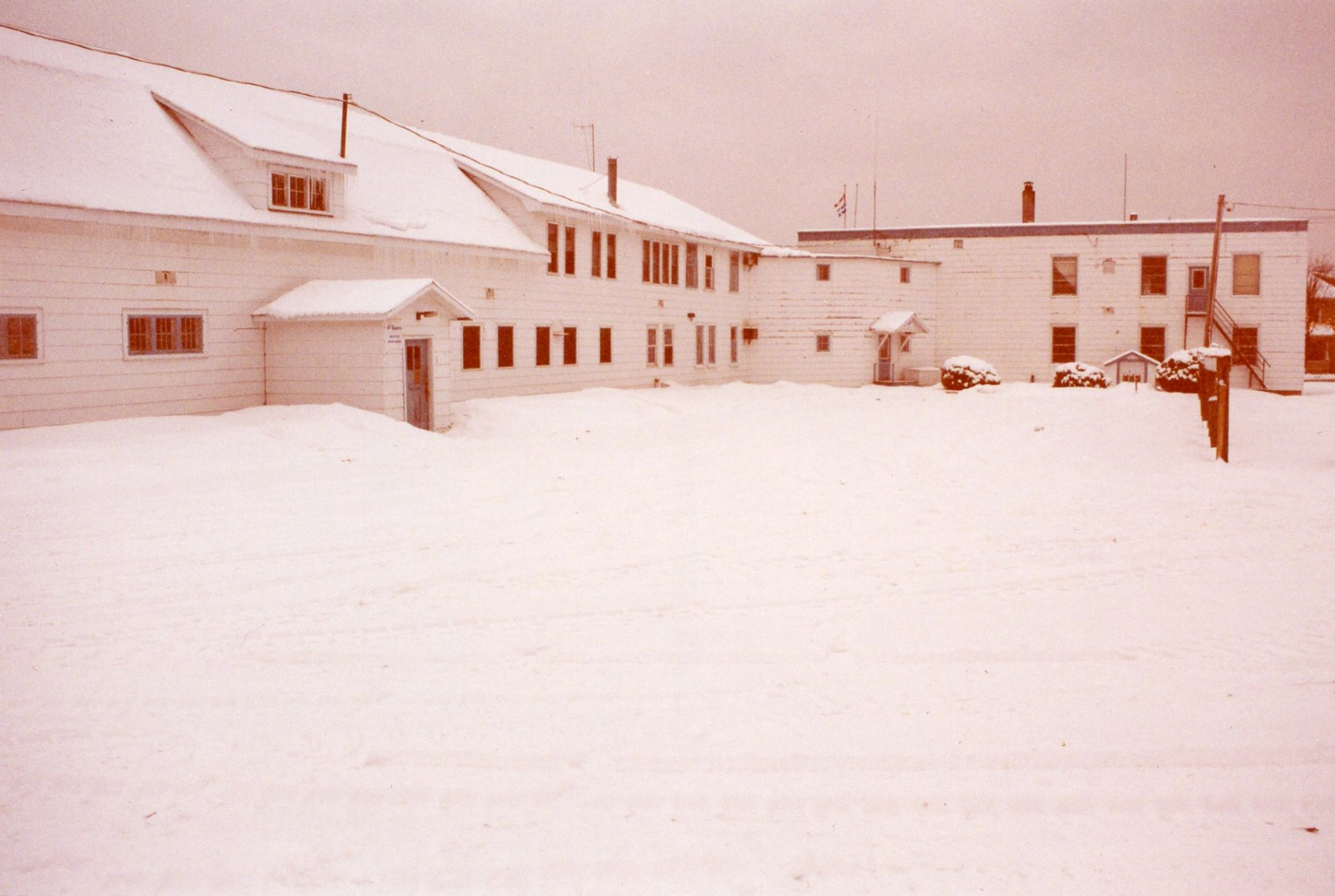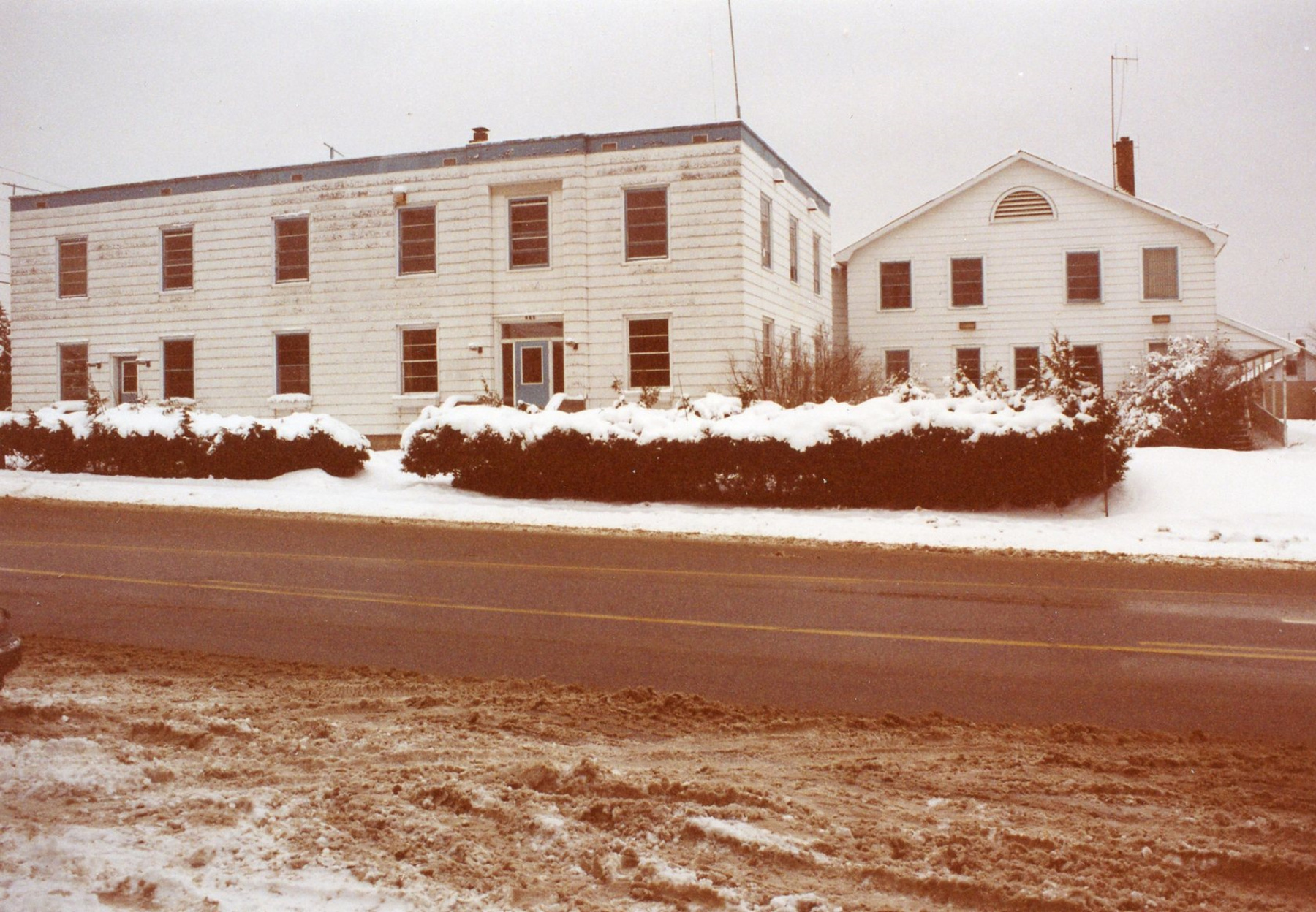Projector
Use this image
Can I reuse this image without permission? Yes
Object images on the Ingenium Collection’s portal have the following Creative Commons license:
Copyright Ingenium / CC BY-NC-ND (Attribution-NonCommercial 4.0 International (CC BY-NC 4.0)
ATTRIBUTE THIS IMAGE
Ingenium,
2009.0069.001
Permalink:
Ingenium is releasing this image under the Creative Commons licensing framework, and encourages downloading and reuse for non-commercial purposes. Please acknowledge Ingenium and cite the artifact number.
DOWNLOAD IMAGEPURCHASE THIS IMAGE
This image is free for non-commercial use.
For commercial use, please consult our Reproduction Fees and contact us to purchase the image.
- OBJECT TYPE
- vertical reflecting
- DATE
- 1946
- ARTIFACT NUMBER
- 2009.0069.001
- MANUFACTURER
- Caesar Mfg. Inc.
- MODEL
- P-1414
- LOCATION
- New York, New York, United States of America
More Information
General Information
- Serial #
- 849
- Part Number
- 1
- Total Parts
- 4
- AKA
- N/A
- Patents
- N/A
- General Description
- metal [including aluminium], glass, rubber , paper or fabric, and synthetic materials of construction.
Dimensions
Note: These reflect the general size for storage and are not necessarily representative of the object's true dimensions.
- Length
- N/A
- Width
- N/A
- Height
- N/A
- Thickness
- N/A
- Weight
- N/A
- Diameter
- N/A
- Volume
- N/A
Lexicon
- Group
- Exploration and Survey
- Category
- Photogrammetry
- Sub-Category
- N/A
Manufacturer
- AKA
- Caesar
- Country
- United States of America
- State/Province
- New York
- City
- New York
Context
- Country
- Canada
- State/Province
- Quebec
- Period
- This instrument used 1946- August, 2003.
- Canada
-
Used by Canadian International Paper from 1946 until August 2003 in the Forest Engineering Department. The instrument was installed on the second floor of the rear building in Maniwaki, Québec [see photos attached, and in Supp. Info.]. The projector was assembled on site. The purchase cost was $ 1 791 (US) in 1946. E.B. Eddy, another important Canadian lumber company, was also using a similar type of equipment in Hull in 1946. Canadian International Paper Co. was a subsidiary of International Paper Co. founded in 1898 in Albany, New York. The Canadian subsidiary was originally formed in 1919 as the St. Maurice Lumber Company but was renamed in 1925 as the Canadian International Paper Co. It acquired vast timberland territories in Canada and constructed some of the world's largest newsprint mills in Québec province. The company was sold to Canadian Pacific Forest Products in 1989 which became Avenor Inc. in 1994. In 1998, Avenor was bought by Bowater. It was important for lumber companies to know the forest resources of their land. Aerial photography was found to be helpful for inventorying those resources in Canada, particularly near the end of the Second World War. The National Research Council played a role in designing a camera. For the aerial photography service, CIP was dealing with Spartan Air Services Limited, located in Ottawa and also Capital Air Surveys Ltd. [Ref. 1] - Function
-
To illuminate, magnify and project aerial photographs. - Technical
-
The P-4141 projects images of opaque objects like photographic prints, artwork or maps onto a tracing table. The opaque original is placed vertically in a copy holder on the side of the lamp house, which is mounted at the top of the projector above the projection lens and tracing table. Inside the lamp house, two 500 watt lights illuminate the image, which is reflected downward by a diagonal mirror mounted at 45 degrees to the image and to the optical axis of the lens. This reflected light from the image passes down through the projection lens onto the surface of the tracing table. The operator adjusts the focus and magnification of the image by moving the lamp house up and down, with the aid of a motor-activated chain drive, or moving the lens along its axis. The operator can align the image horizontally on the tracing table by shifting the lamp house back and forth by up to 16 inches. The operator produces a forest inventory map in the following way, First, he/she projects a published base map onto the table, adjusts magnification to render the desired scale, and traces the relevant planimetric data (roads, rivers, lakes, etc.) onto the blank map sheet. Then, he/she places the aerial photo for the map in the copy holder, adjusts magnification to fit the new base map (and corrects for tilt if the tracing table is adjustable) and traces the various forest stand boundaries, which have previously been outlined on the photo by an air photo interpreter. The mirror stereoscope [2009.0070] is used to analyse the aerial photographs. Using two properly oriented photographs, it provides the mental impression of a three-dimensional model. It enables the viewer to have a clearer image and be able to estimate relative heights of objects, in this case, trees. Before aerial photography, forest resources inventories were done by field sampling on the ground. This method is still being used as it gives a detailed tree and stand information. This method of transferring data from aerial photographs was imprecise but was the only one available at the time and was used in the forestry industry until about 1990-1995. It was followed by a process known as "orthographie" in which paper photos were scanned, then corrected in order to be transposed on the 3-D land digital model they had. This process lasted only a few years to be followed by the use of digital aerial photographs which were converted to 3-D by computer software and corrected directly in their 3-D map model. This model is much more exact and is nowadays (2010) used everywhere. - Area Notes
-
Unknown
Details
- Markings
- Plate on light box front reads "J.G. SALTZMAN, INC./ CAESAR MANUFACTURING, INC./ SERIAL/ NO./ 849/ PAT. PEND./ NEW YORK"; identical plate fixed to back board. Scale 40- 100, calibrated to 1/4-inch and labelled in increments of 1 inch is mounted vertically on one post. "170" stencilled in white on one side of light box. "SERIES S No. 47019 ILEX PARAGON ANASTIGMAT F:4,5 E.F. 12" and f-stop settings printed in white on lens housing. "J.G. SALTZMAN INC./ NEW YORK/ CAESAR MFG. INC." cast in raised print and highlighted in silver on instrument back. Motor/ electronic box covers all bear decals reading "CUTLER-HAMMER/ MOTOR CONTROL/ C-H". "C-17" printed on small metal plate fastened to light box suspension element. Projector motor bears plate reading "RATIOMOTOR/ CAT. NO. MC 8850 S/ MOUNTING A/ R.P.M. 34.5/ IN LBS. TORQ. 90/ SER. NO. A61093/ BOSTON GEAR WORKS, INC./ NORTH QUINCY, MASS." Second plate on motor head reads "GENERAL [logo] ELECTRIC/ A.C. MOTOR/ MODEL 5KH35AB262A/ TYPE KH H.P./12 V. 115/ CY. 60 PH. 1 RPM~ 1725/ A. 2.2 CAPS. [blank] GEJ-213 TEMP./ RISE/ 40 [degrees] CONT./ SCHENECTADY, N.Y. MADE IN U.S.A./ N.P. 59441". Paper tag tied to motor is damaged: reads in part "20M2- 13- 42/ TYPE KH/ RESISTANCE SPLIT PHA[se]".
- Missing
- Unknown: possibly missing roll map holder and photo print holder. Glass plate used with projector damaged in transit: to be replaced by CSTM Conservation. Said to be operational at time of acquisition by CSTM.
- Finish
- Predominantly metal, with aluminium back board and glass optical system. Black wrinkle-textured finish overall; selected components (ie. upright posts, back board] are silver metal. Black coated fabric [? coated paper ?] bellows. Black rubber pads cover selected cast metal elements.
- Decoration
- N/A
CITE THIS OBJECT
If you choose to share our information about this collection object, please cite:
Caesar Mfg. Inc., Projector, 1946, Artifact no. 2009.0069, Ingenium – Canada’s Museums of Science and Innovation, http://collection.ingeniumcanada.org/en/item/2009.0069.001/
FEEDBACK
Submit a question or comment about this artifact.
More Like This
